
peacock spider
Maratus volans (family: Salticidae)
Our most common peacock spider here in the forest. This is how we usually see them, hunting amongst low vegetation. We hope to one day spot one (well, two) during courtship, with the abdomen raised and brilliant yellow side flaps flared.
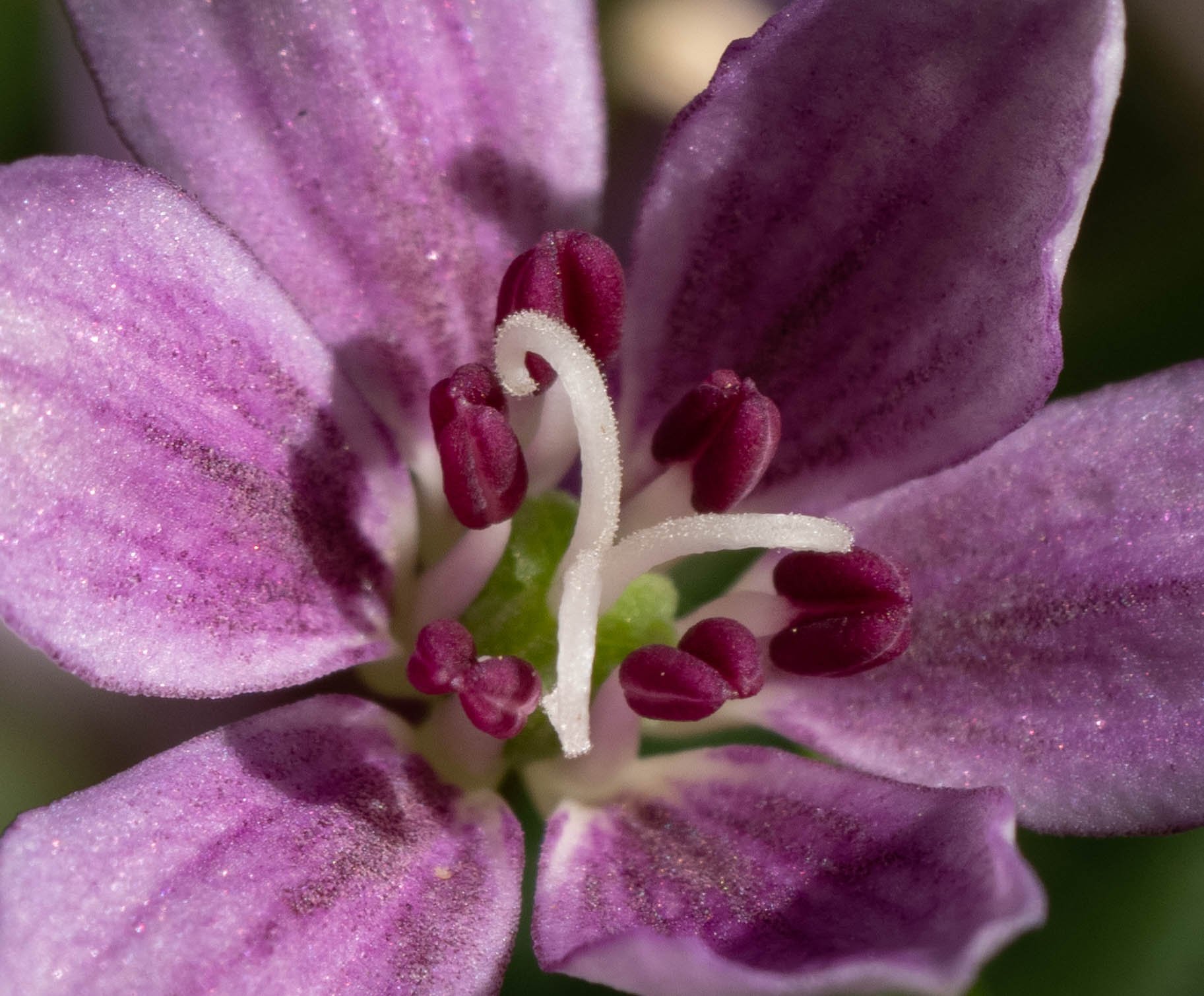
Lilac Lily
Schelhammera undulata (family: Colchicaceae)
The first flowers have just started to appear, but within days we expect this low-growing plant to be blooming throughout the forest. It is a regular summer flower here, yet is listed as vulnerable in Victoria and described as ‘widespread but not common’ in NSW.

Milkmaids
Burchardia umbellata (family: Colchicaceae)
Another lily that has just started to flower in recent weeks. Burchardia flowered profusely in the two summers post-fire. It is likely to settle back to more ‘normal’ levels now.
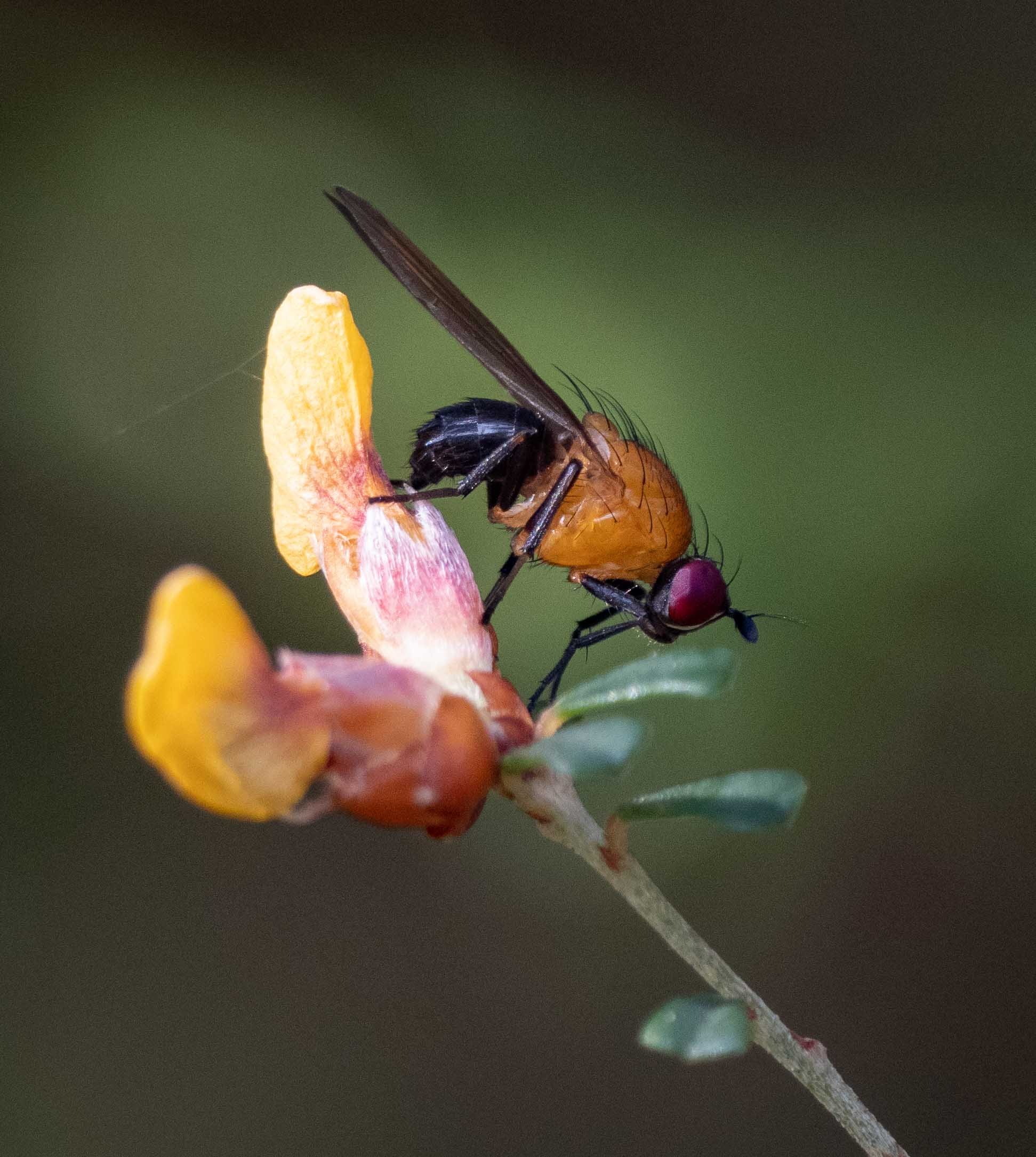
lauxanid fly
Sapromyza sciomyzina (family: Lauxaniidae)
These small flies have appeared in the forest over the last few days. They rest, very obligingly for the photographer, on flowers or leaves, showing off their handsome purple eyes and orange thorax. Australia is a hotspot for Sapromyza diversity, with 46 species described to date.

mating flower wasps
subfamily Thynninae … species unknown.
As with nearly all Thynninae, identification below subfamily is not really possible. There are so many undescribed species out there. This one is quite large. They range in size and colour, but are readily recognised when mated. The wingless female is attached to the tip of the male’s abdomen.

native bee
Trichocolletes (family: Colletidae)
This male was resting on a leaf, not feeding. I managed photos from several angles and, after a bit of literature-digging, have suggested a species ID. Trichocolletes orientalis, a species that has been recorded in Nadgee Nature Reserve and was first formally described in 2012. (see my iNaturalist record for details)

mud-nesting spider wasp
tribe Ageniellini (family: Pompilidae)
A large wasp moving so rapidly around the leaf litter in search of spiders that I was lucky to grab this single shot. It is our first of this species for the season.

Climbing Apple-Berry
Billardiera mutabilis (family: Pittosporaceae)
This is the attractive flower of a twining shrub in the same family as Pittosporum. Its fruit is an edible berry. However it is probably more palatable to birds than humans.

Button Everlasting
Coronidium scorpioides (family: Asteraceae)
The dry, papery bracts of these flowers make them look old before their time. These brown-edged flowers are healthy and have just begun to open (2nd October).

lynx spider on everlasting daisy
Coronidium scorpioides (family: Asteraceae)
The daisies are now fully open … the flat flower head is a perfect launch pad for a hunting lynx spider (Oxyopes sp.) (11th October).
[14th October update: 3 days, several heavy downpours and gale force winds … and he’s back on site, same flower, same posture, obviously the same spider]

Grass tree
Xanthorrhoea concava (family: Asphodelaceae)
The first spring after the January 2020 Border Fire saw an extraordinary flowering of grass trees - click HERE to see this display. In 2021 flowering returned to a normal level with just a handful of flowering culms. And this spring we have seen just two spikes to date, one of which is shown here.

Pink Fingers orchid
Caladenia carnea (family: Orchidaceae)
The most common orchid flowering this month, with petals varying in the intensity of the pink colour.

Pink Fingers
Caladenia carnea (family: Orchidaceae)
Caladenia carnea can easily be confused with other, similar species … most notably, Caladenia fuscata. It is possible we have both here, so I need to start taking more notice of the number of flowers per stem and the shape of the lateral lobes.
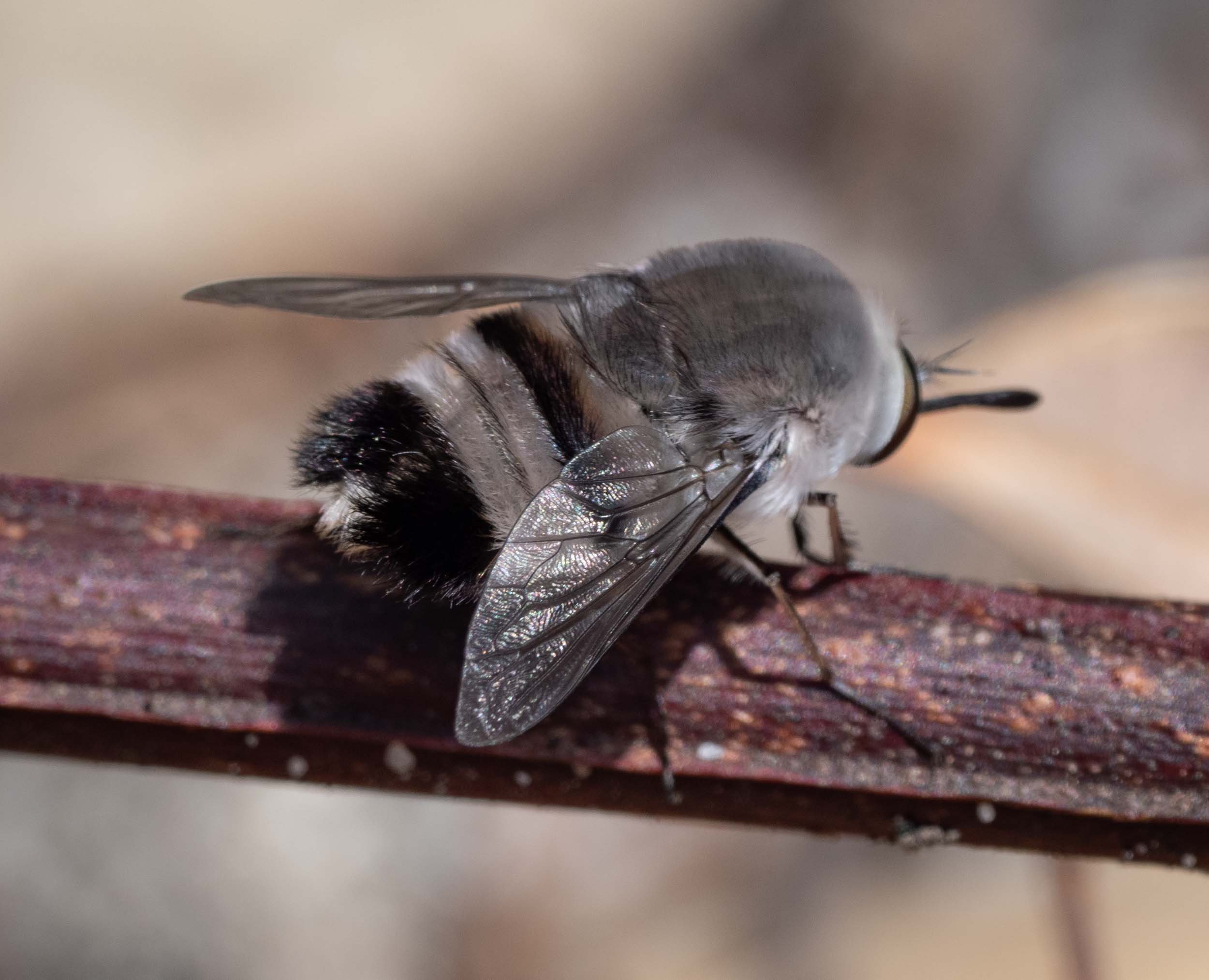
typical bee fly
Meomyia albiceps (family: Bombyliidae; subfamily: Bombyliinae)
Like many others in the family, these fuzzy little flies collect sand into a chamber at the end of their abdomens and use this to coat their eggs. Last summer we watched this sand-gathering in action, with the flies favouring the fine sand of a termite mound.

long-winged bee fly
Aleucosia calophthalma (family: Bombyliidae; subfamily: Lomantiinae)
Remarkably little is known about the biology of these conspicuous flies. Aleucosia larvae are likely to be parasitic or predatory on other insects, but which insects and how is unclear. We tend to see the adults feeding at flowers, or perched in sunny patches of the leaf litter.
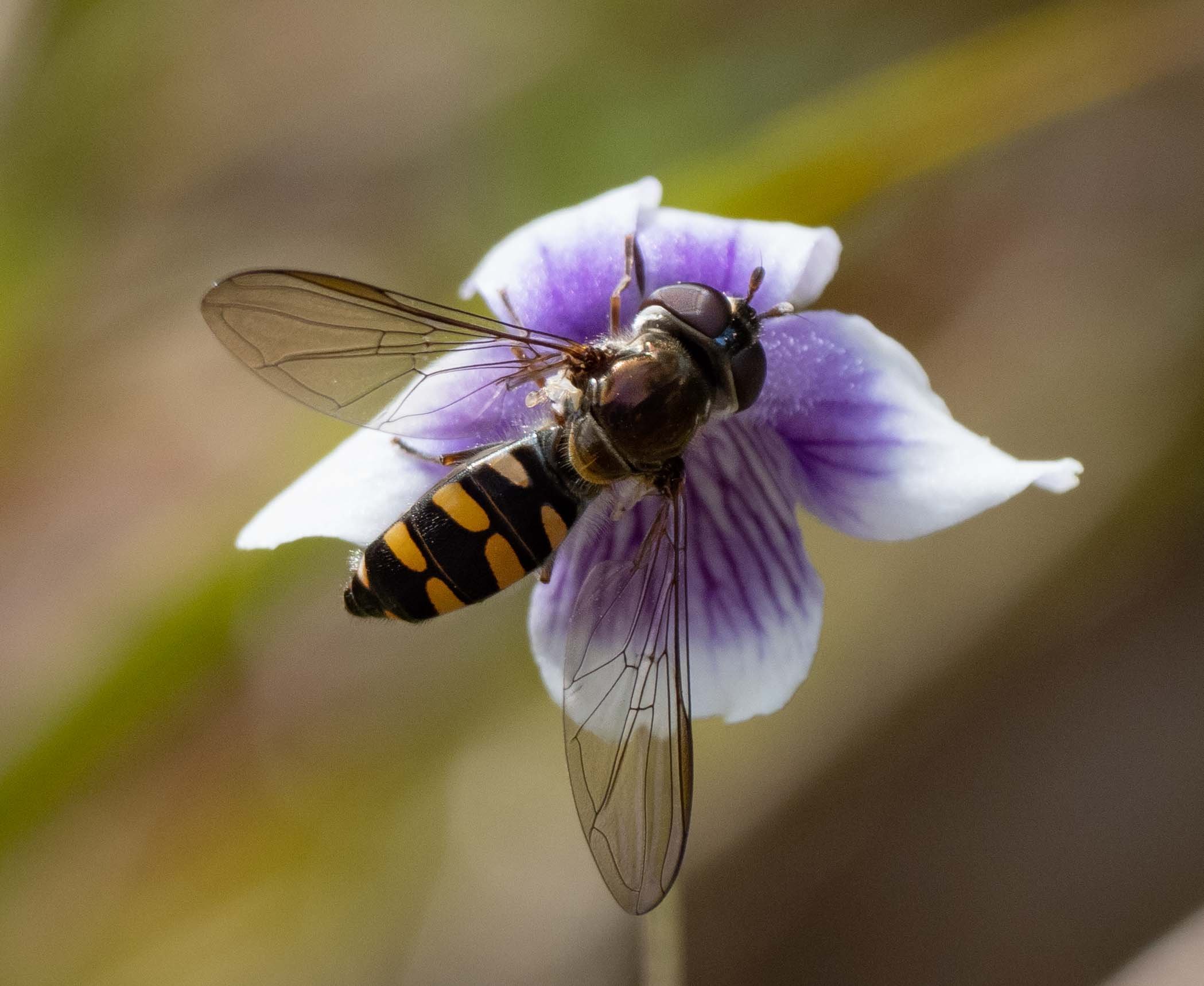
hover fly
Melangyna (family: Syrphiidae)
Adult hover flies are pollen and nectar feeders, but as larvae they are voracious predators of aphids and other sap-sucking bugs. This hover fly seemed larger than most that we see here.

purple flag
Patersonia glabrata (family: Iridaceae)
These delicate, showy flowers are short-lived, typically lasting just a day.

purple flag pollination
Patersonia glabrata, with visiting bee (probably Lasioglossum)
The yellow structure in the heart of the flower is a cluster of anthers, the pollen-bearing parts. Here they are fully open and releasing large pollen grains … which adhere to the hairs of visiting insects, such as bees and hoverflies.
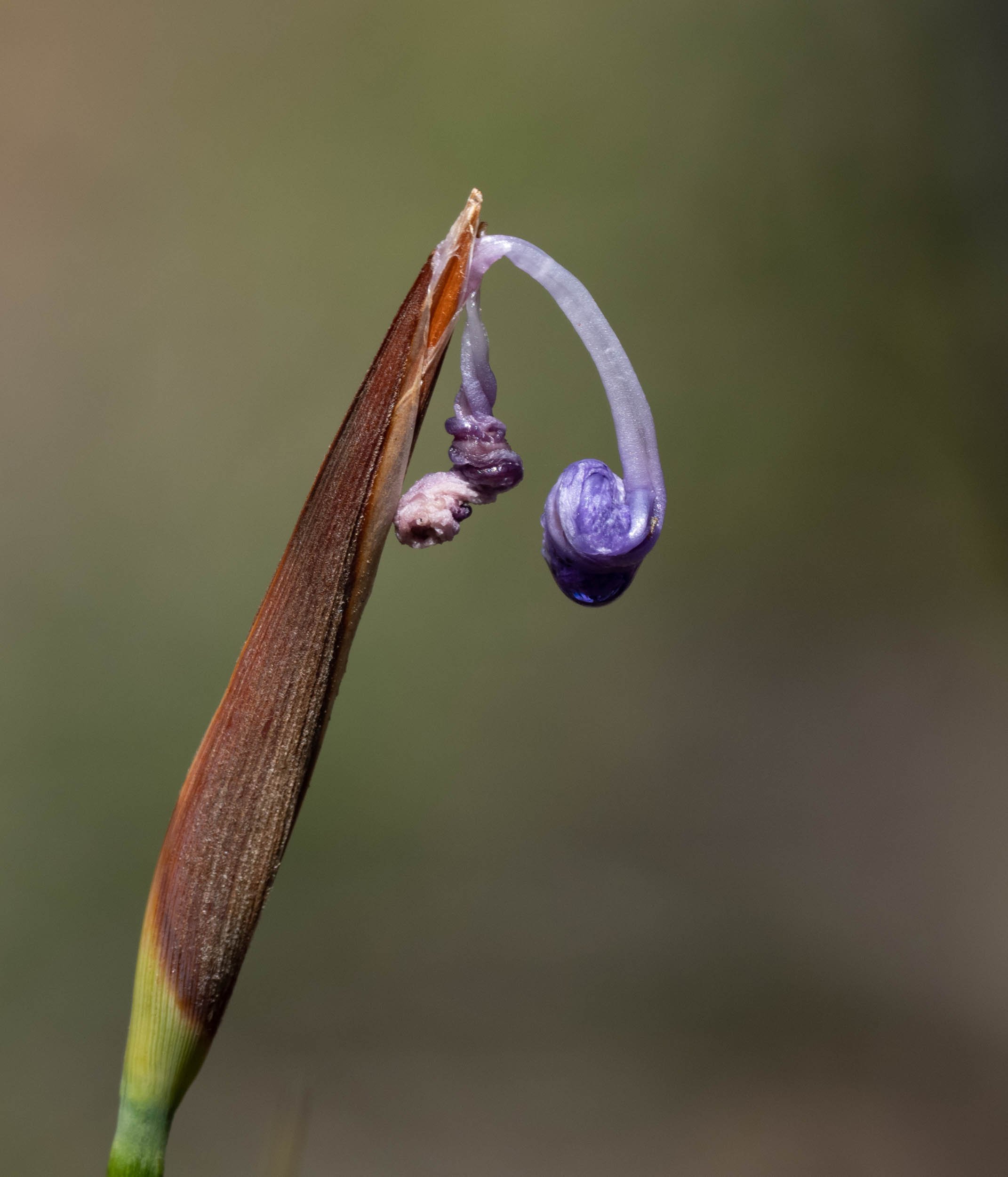
purple flag ... furled
Patersonia glabrata (family: Iridaceae)
Typically within a day of opening, the purple flowers collapse and furl into a twisted spiral … only to be replaced by a fresh bloom from the same inflorescence the next sunny day. This plant shows two spent flowers, and there may be more to come yet. Patersonia have 2-12 flowers per inflorescence … although I’m not sure how many this particular species tends to produce. Perhaps I need to be a little more observant.
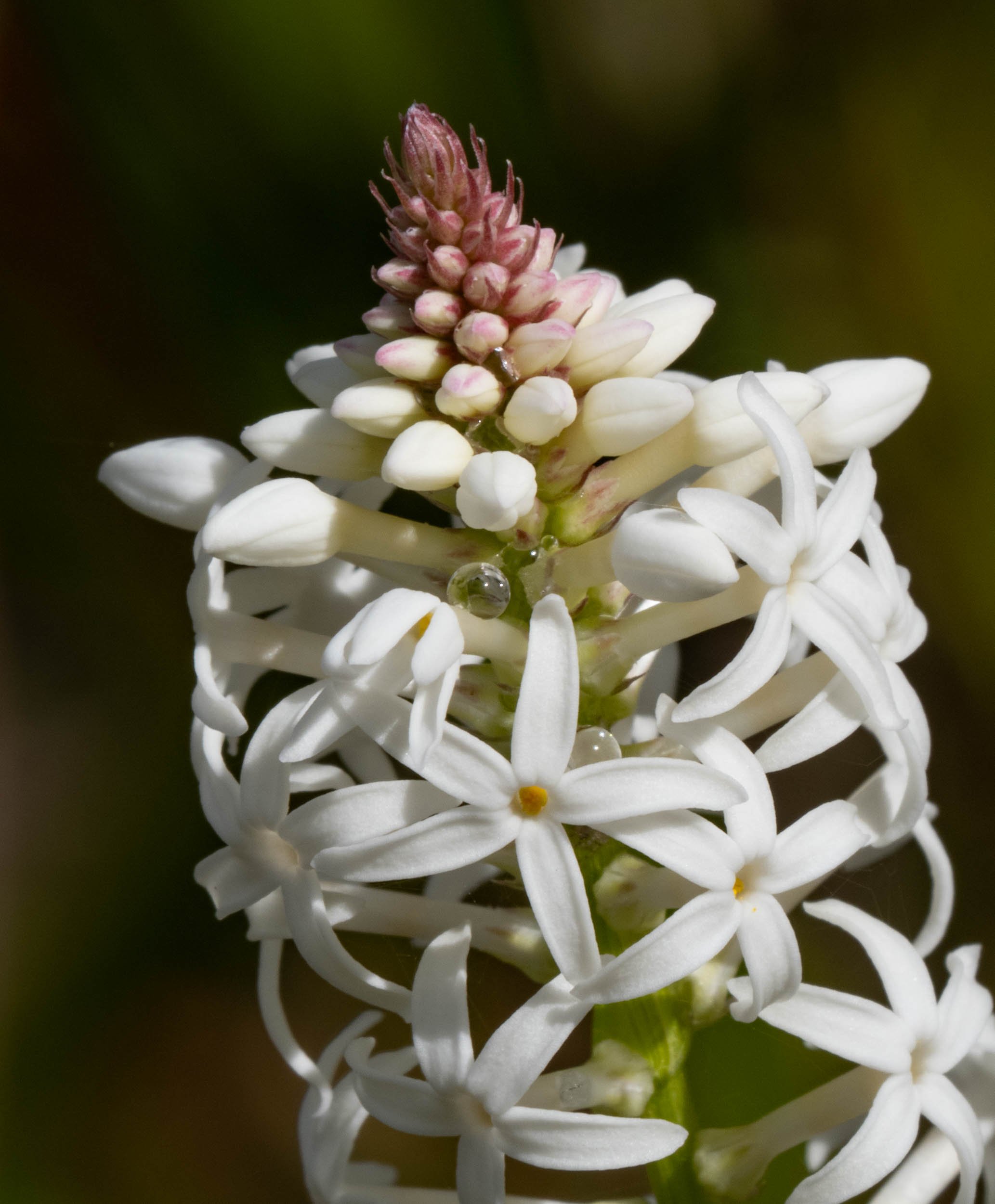
Creamy Candles
Stackhousia monogyna (family: Celastraceae)
If I had to name a favourite flower, I think it would be this one. The delicate colours, radial symmetry, and they last for weeks, growing taller as the upper flowers open and the lower ones mature into fruit.
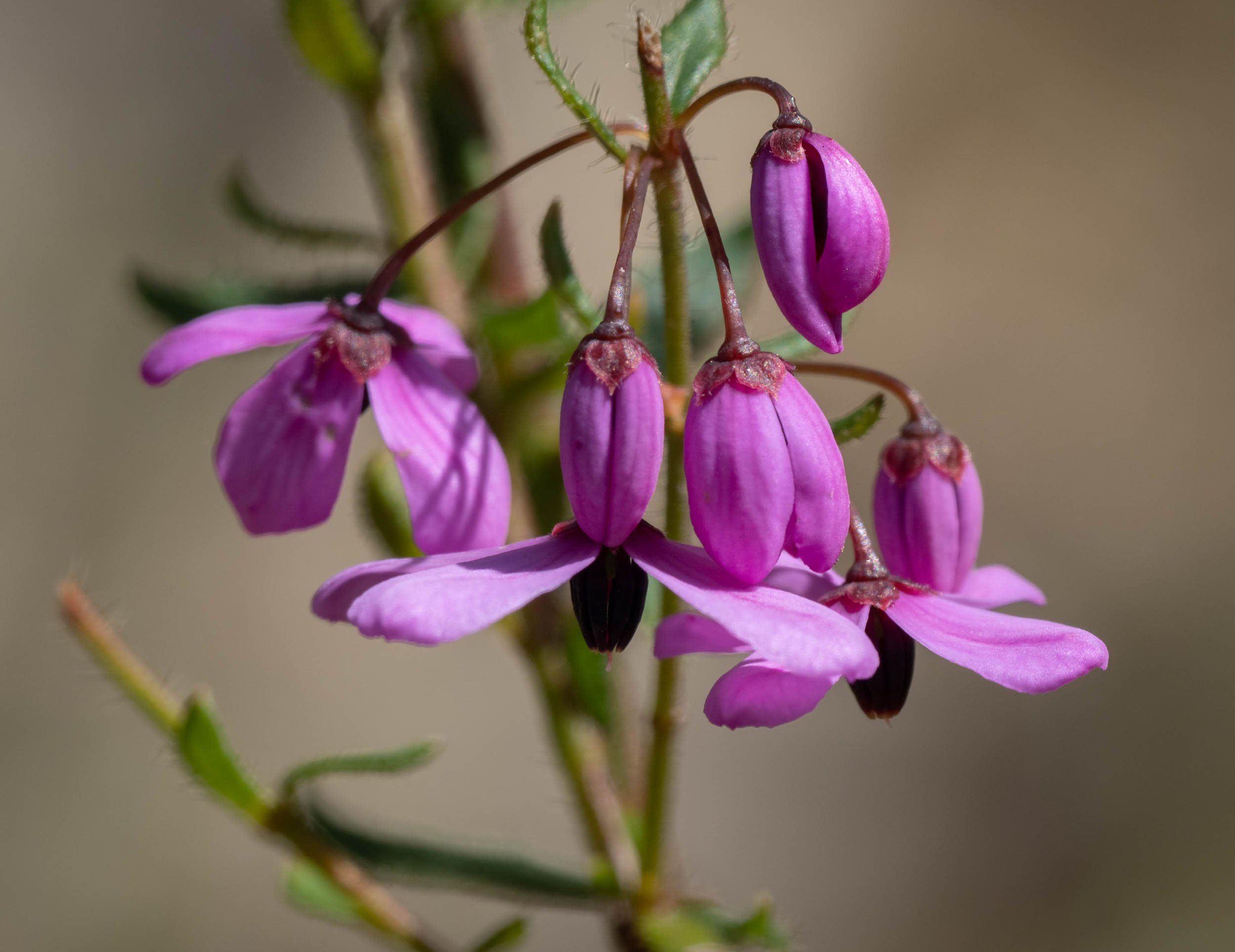
pink bells
Tetratheca pilosa (family: Elaeaocarpaceae)
A plant of the south east corner where it grows in coastal heath and lowland forests. Indeed, we are near the northern extent of its range. Our pink bells bloom this spring is heavier than we’ve ever seen it.
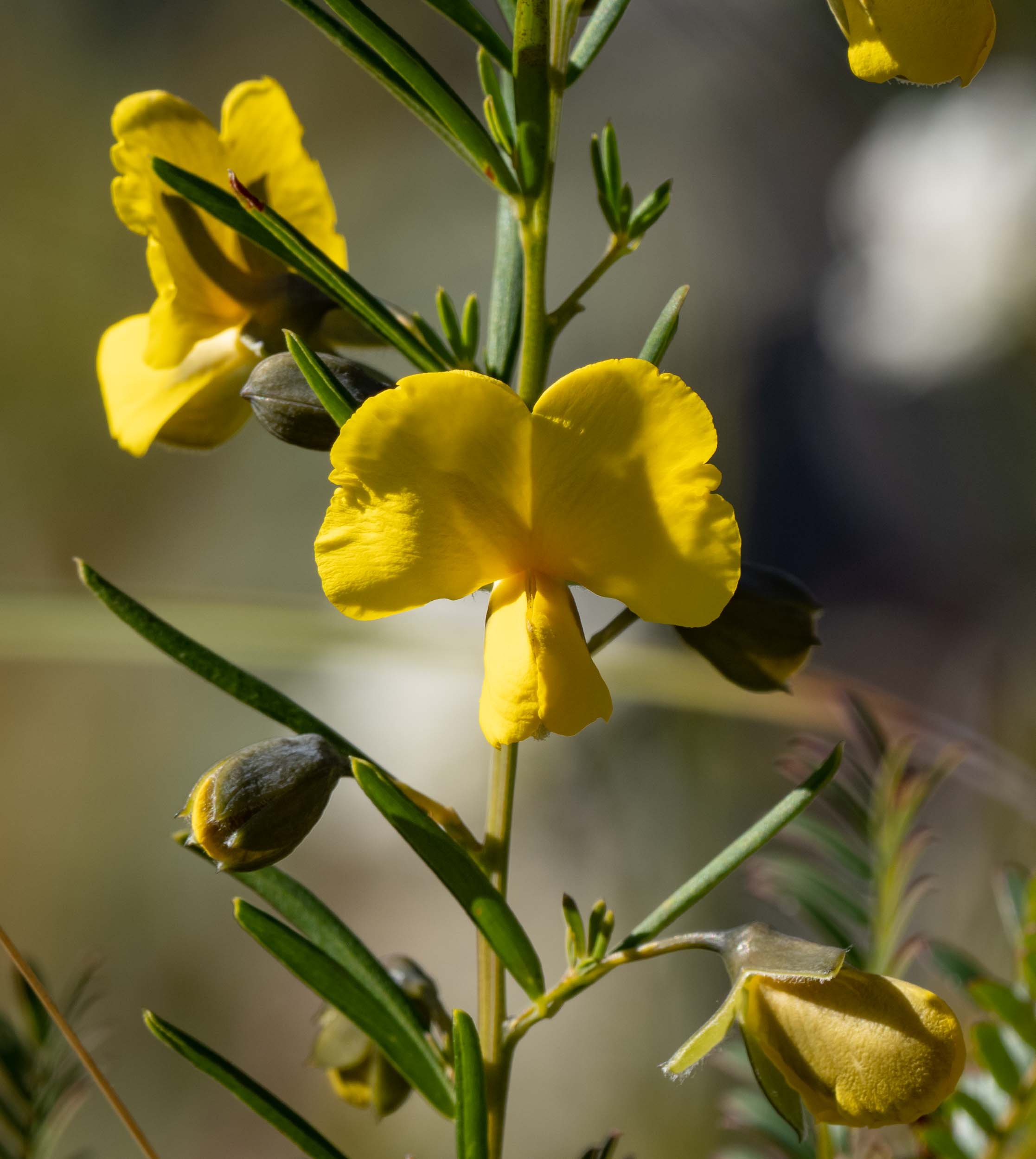
Golden Glory Pea
Gompholobium latifolium (family: Fabaceae)
Compared to many other yellow peas flowering at this time of year, Gompholobium flowers are large and the plants delicate. The species is more common in coastal, sandstone country further north, especially around Sydney. Along our southern coast and into Victoria it is generally uncommon.
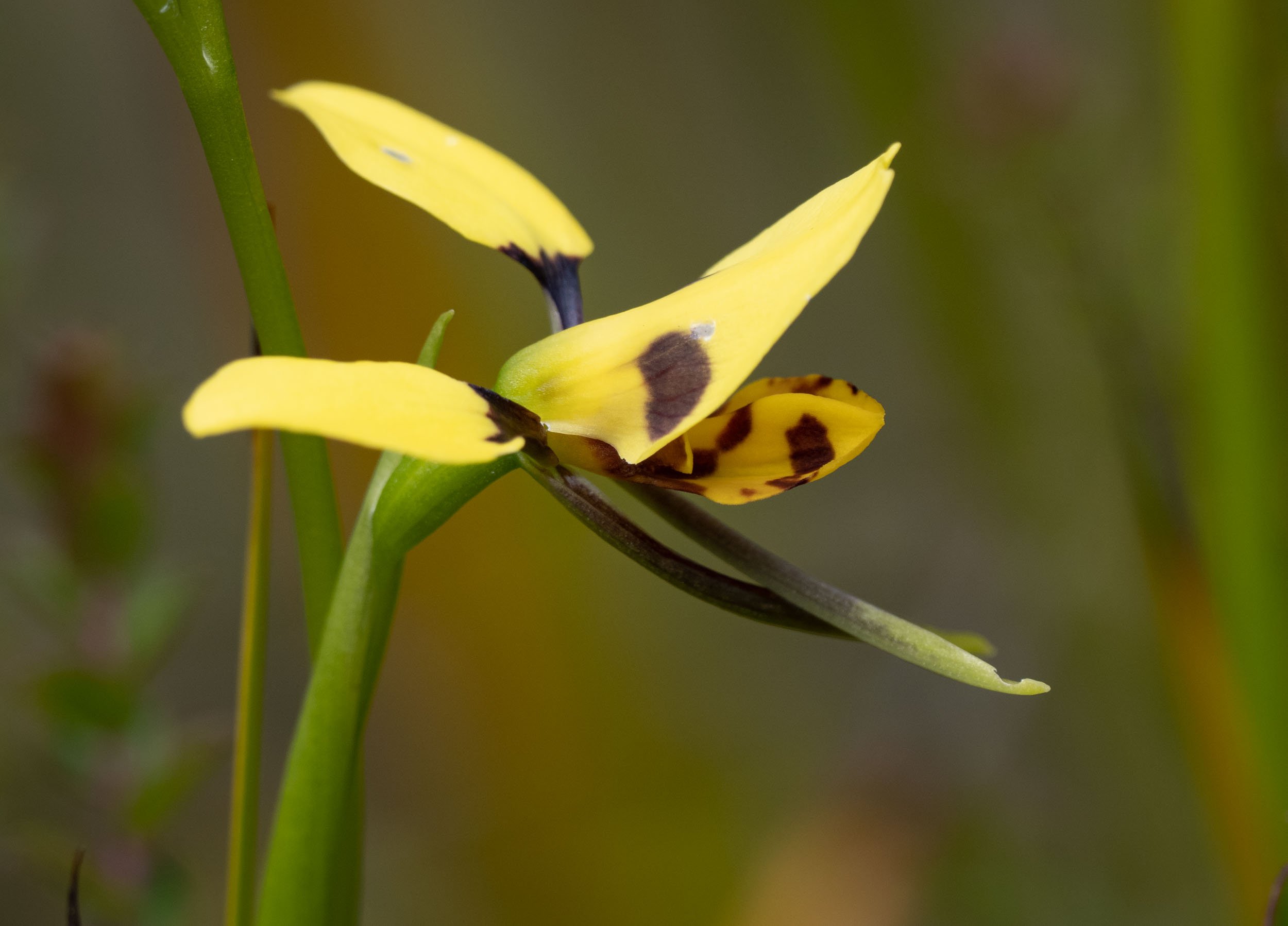
Tiger Orchid
Diuris sulphurea (family: Orchidaceae)
We were blessed with a exuberant display of this orchid last spring, which we hope will be repeated this year. The first flowers have appeared in the last couple of days.
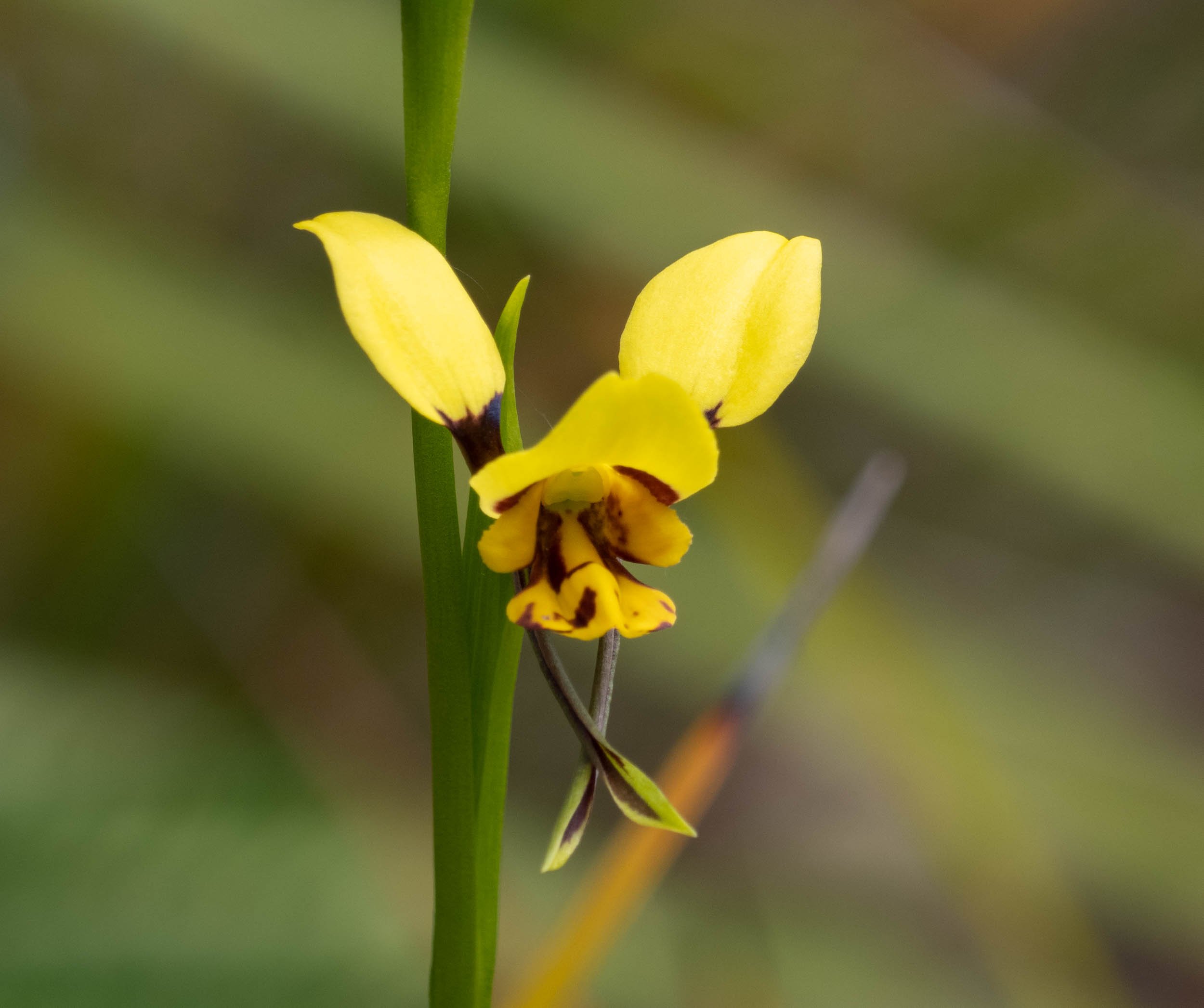
Tiger Orchid
Diuris sulphurea (family: Orchidaceae)
Yellow is a common flower colour, but nothing else quite matches the sulphorous hue of these petals.
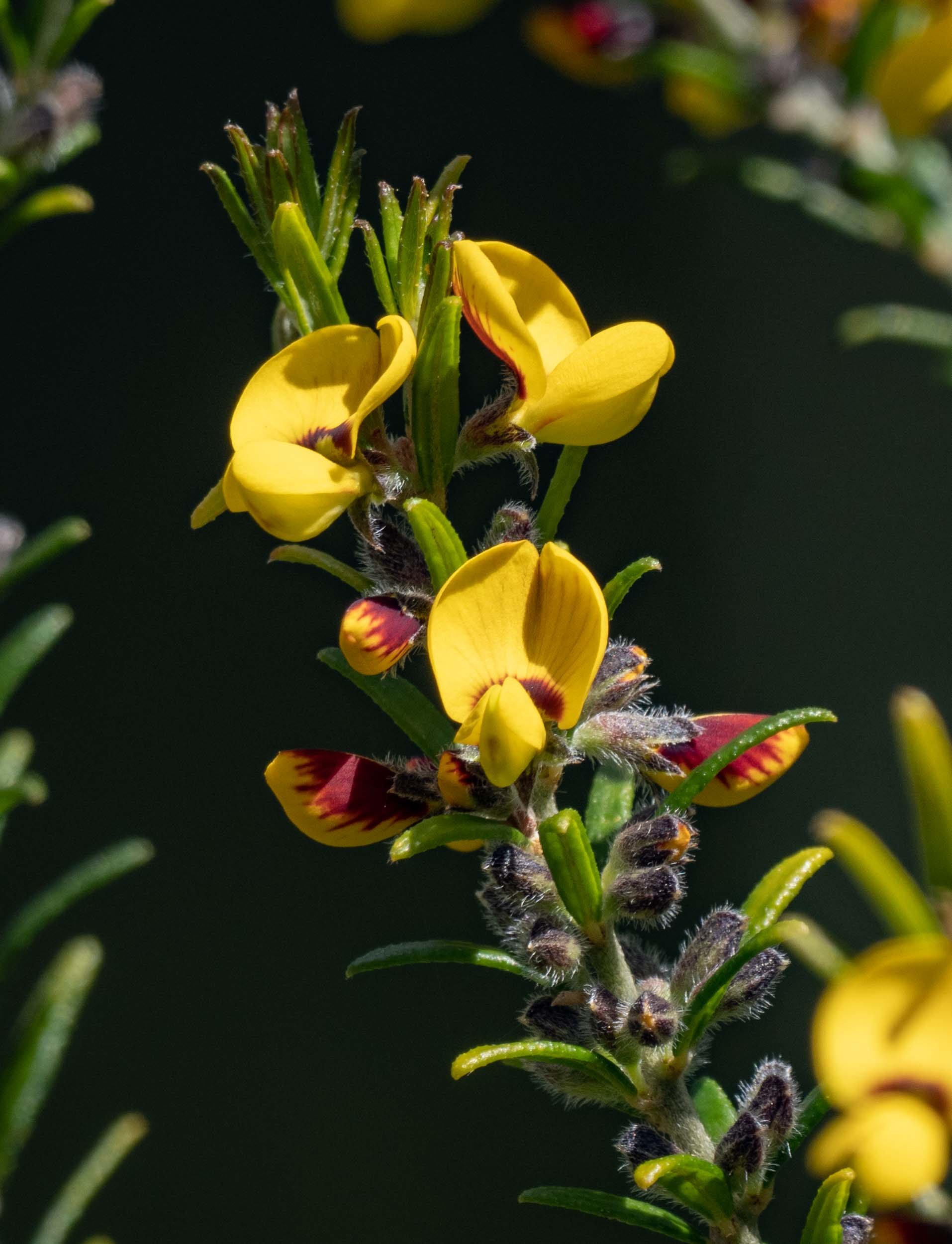
Common Aotus
Aotus ericoides (family: Facaceae)
”Common” it may be, but this term devalues the magnificent show this pea species puts on when it blooms. This began in late September and is now at a peak.
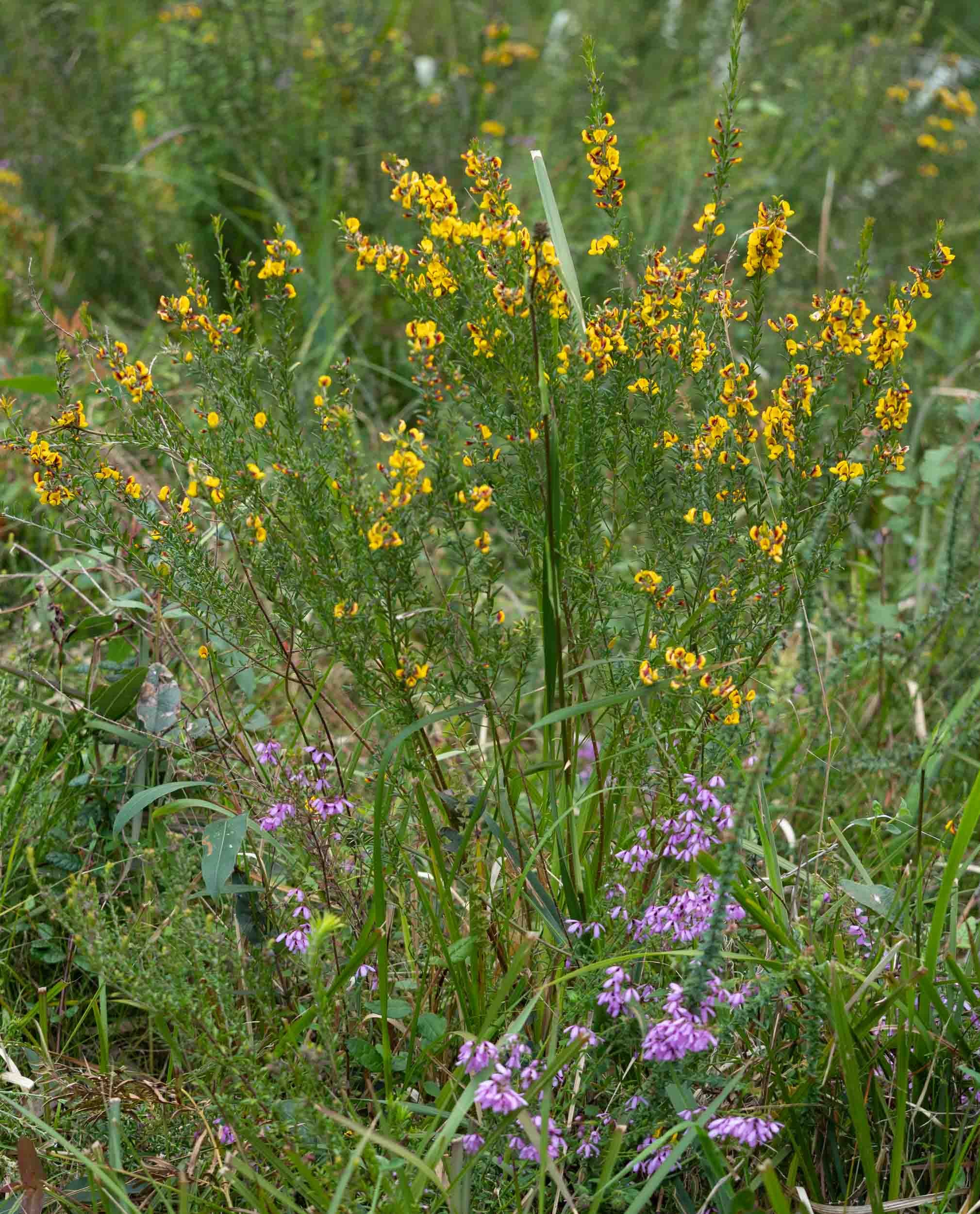
Common Aotus
Aotus ericoides (family: Fabaceae)
This pea is widespread in our forest and its dense clumps make an eye-catching sight in bloom.
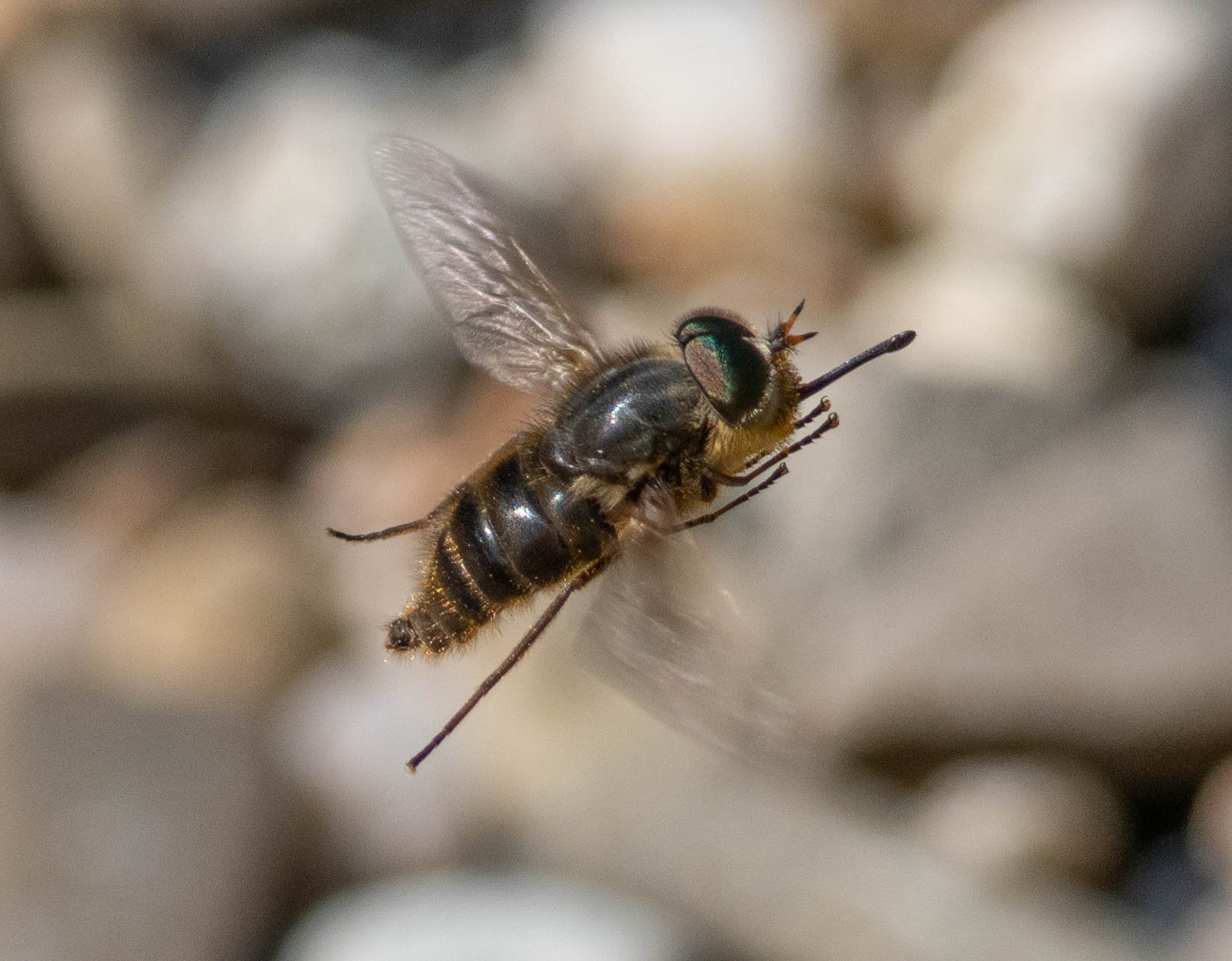
march fly
Myioscaptia calliphora (family: Tabanidae)
March flies have a poor reputation arising from the female’s habit of penetrating the skin with her long proboscis in the search for blood - ouch! Male march flies have the same weapon as the female but only use it to collect nectar from flowers. This time of year, a bunch of males - like the one seen here - put on hovering display flights over a patch of gravel near the house. So we have a lek! (google it)

Eastern Spinebill
There is nectar aplenty for these birds at this time of year. When not at the flowers, they’ll be busy feeding chicks at the nest.
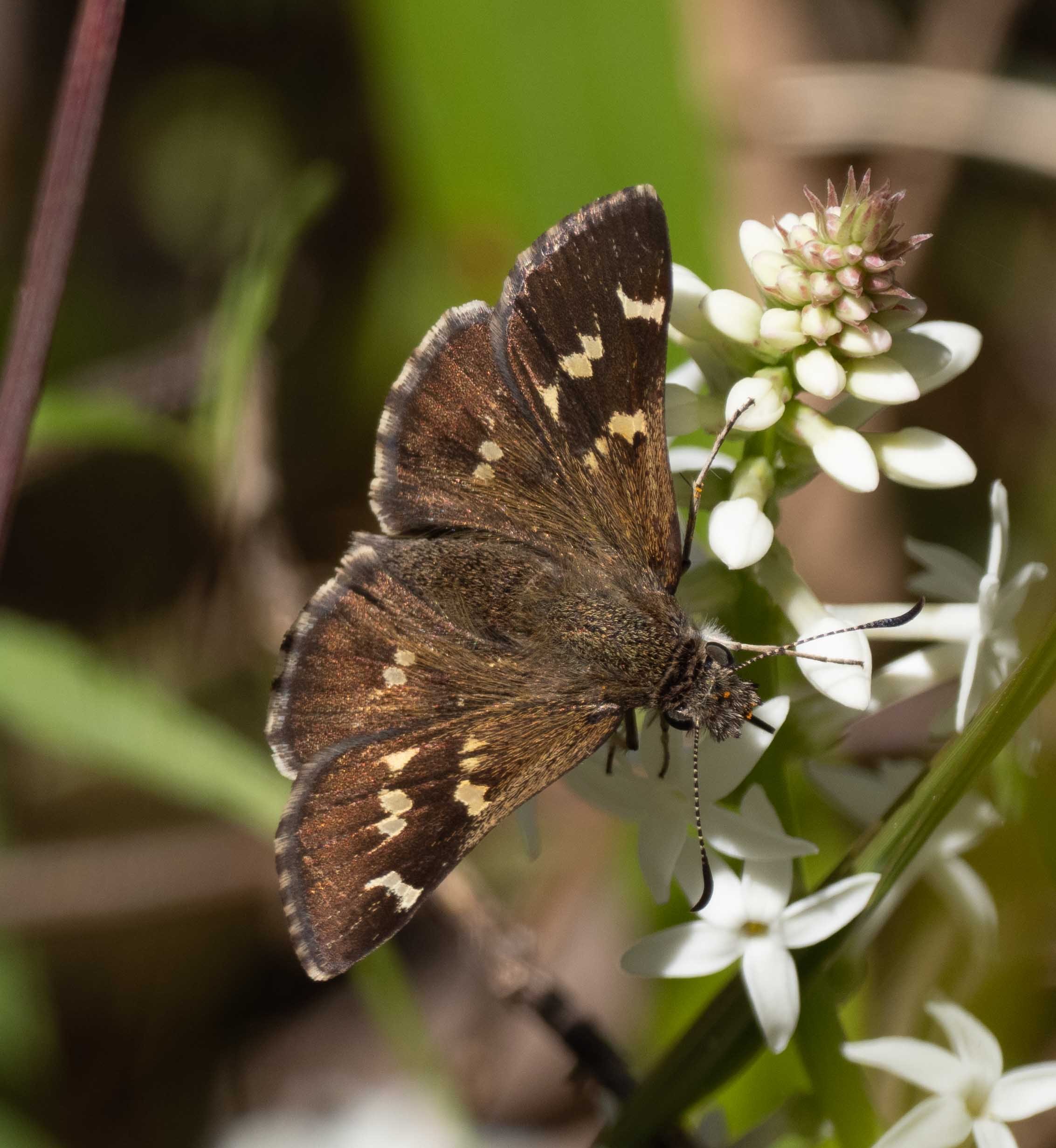
Two-spotted Grass Skipper
Pasma tasmanica (family: Hesperiidae)
Peak blooming of Stackhousia monogyna (Creamy Candles) has coincided with the appearance of butterflies like this skipper, which can access nectar at the base of the corolla of the flowers with its long proboscis. The feeding activity of the butterfly pollinates the flowers - a win-win situation.
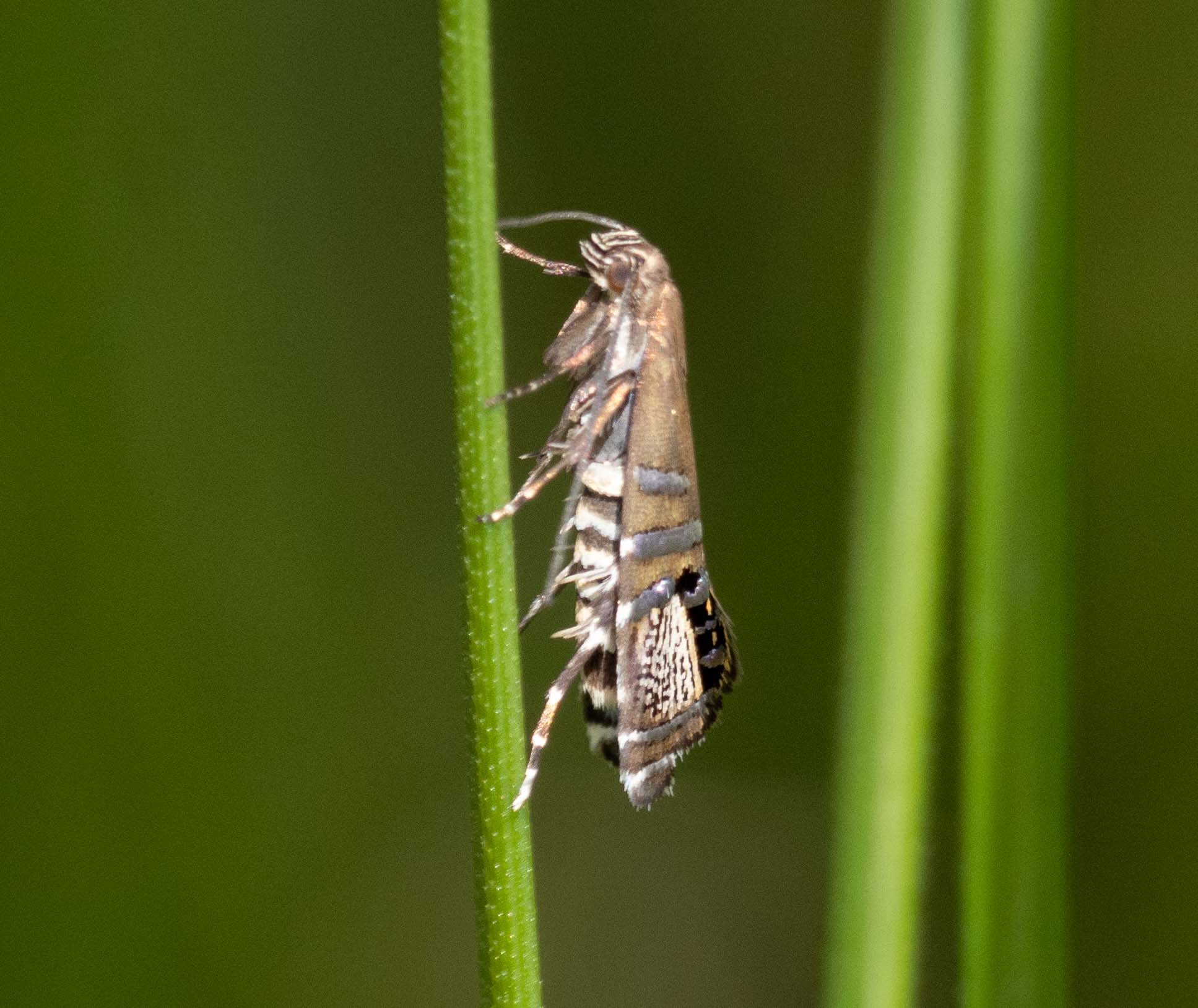
sedge moth
Glyphipterix cometophora (family: Glyphiterigidae)
These small, but very attractive moths are often seen perching on the vertical stems of sedges, such as this Gahnia radula. They open and close their wings in what we presume is a mating display.
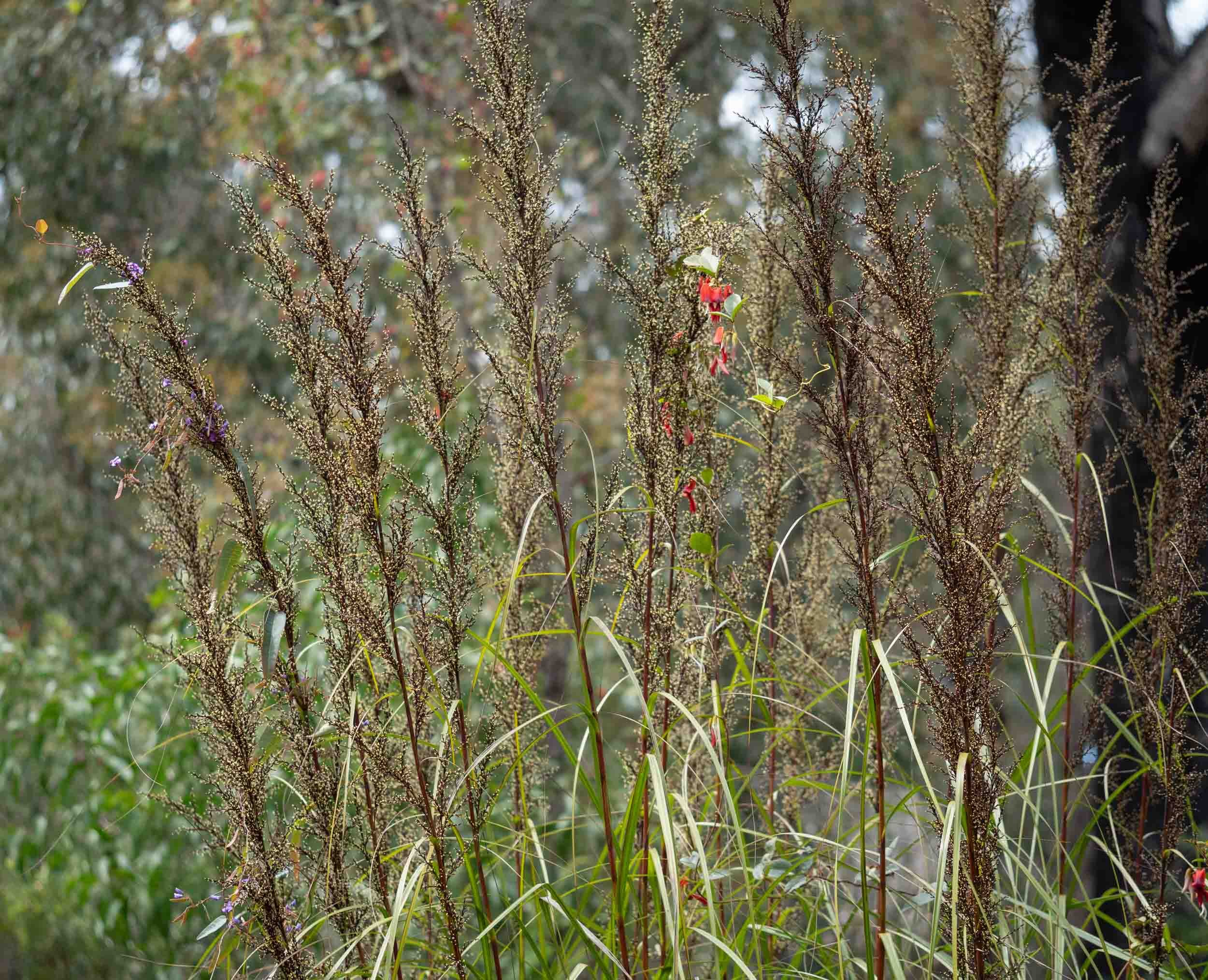
Tall Saw-sedge
Gahnia clarkei (family: Cyperaceae)
This sedge lives up to its name - the tallest culms of our plant are almost 4 metres high. They are shown here in full bloom about 2 weeks ago, sporting their male flower parts.
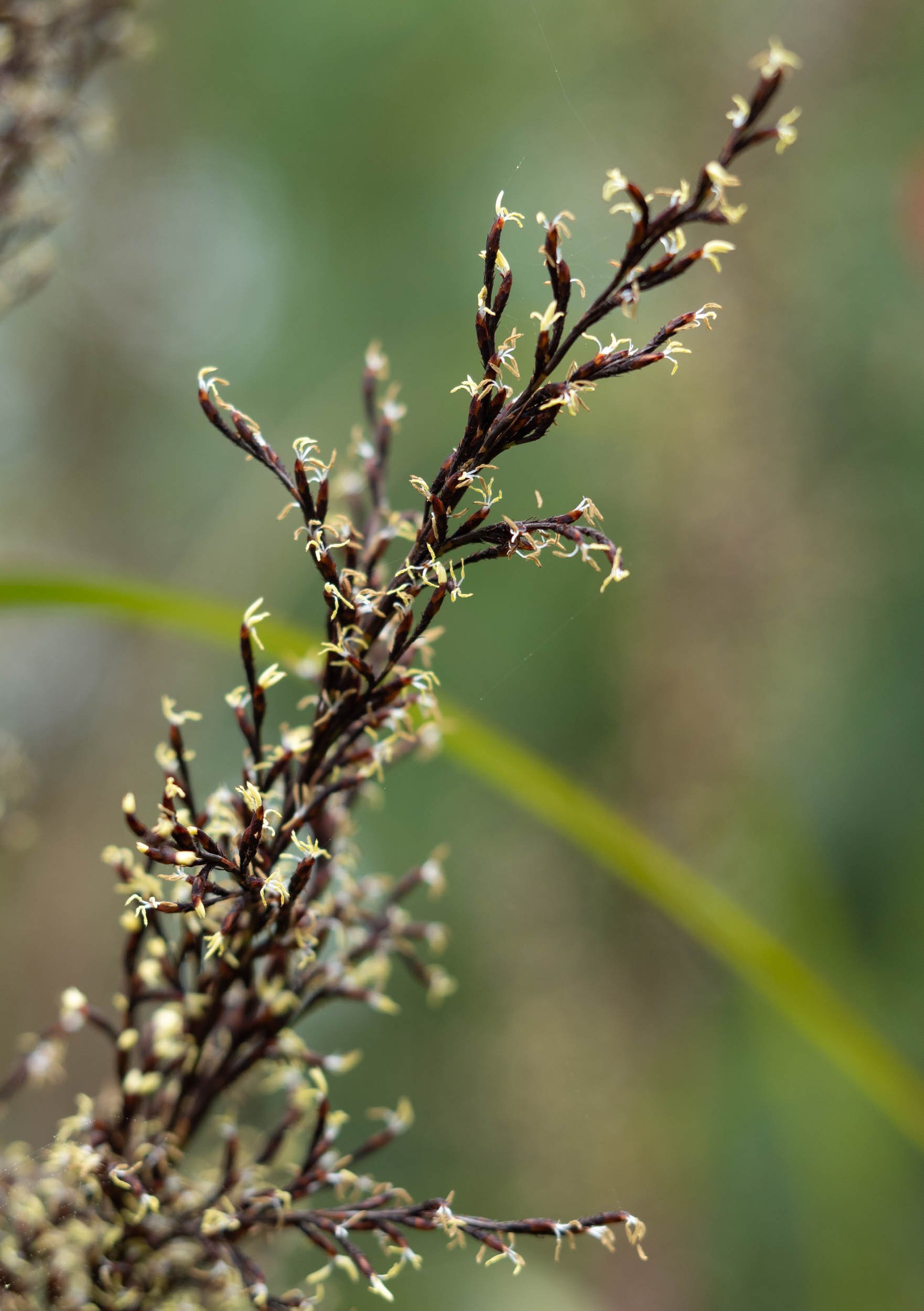
Tall Saw-sedge
Gahnia clarkei (family: Cyperaceae)
A close up of a culm shows the yellow stamens projecting from the tip of each flower. A week after this photo was taken all of these stamens had been replaced by feathery female stigmata - ready to catch wind-borne pollen from anthers of other plants.
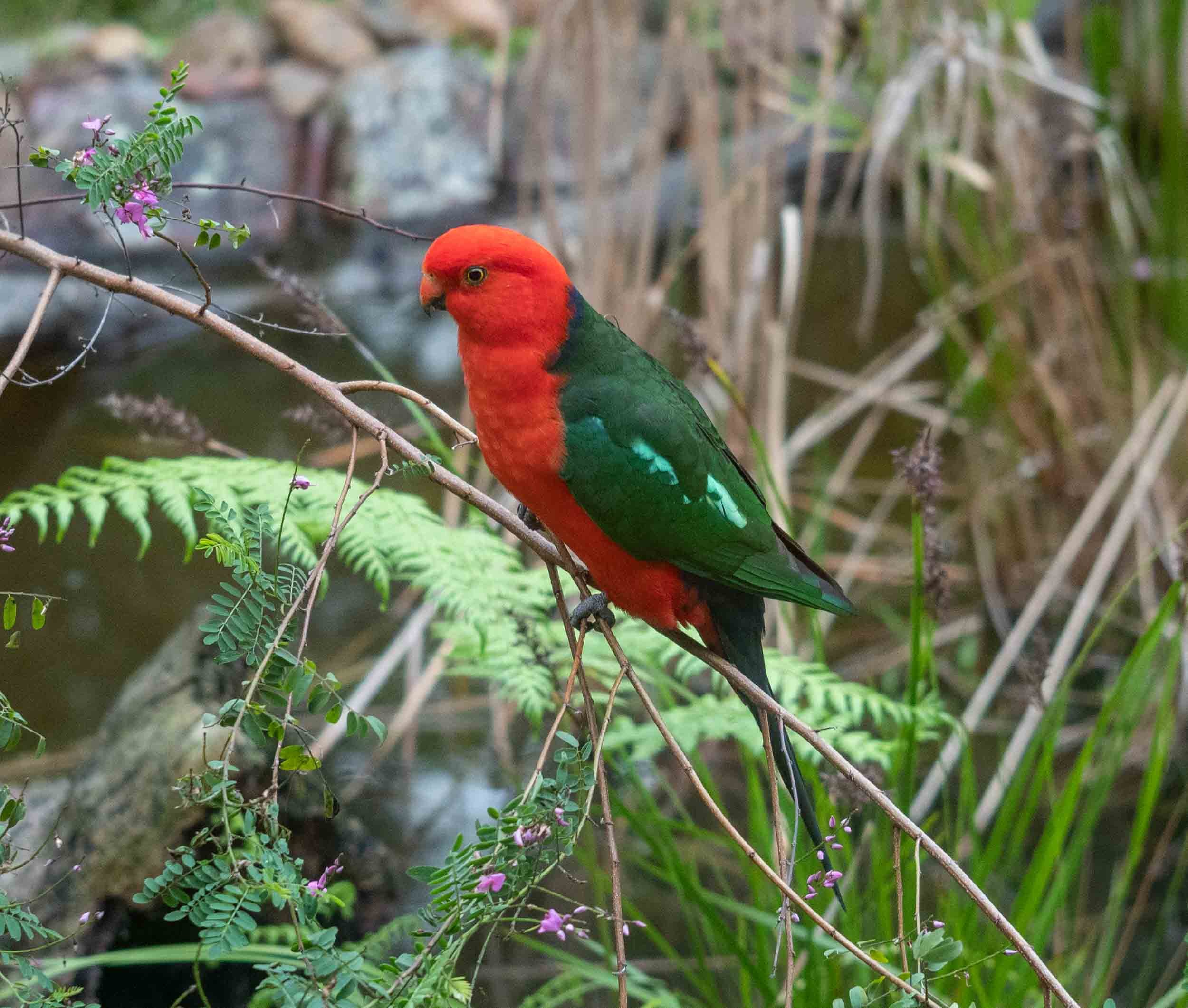
King Parrot - male
King Parrots are rather partial to flowers - including those of Austral Indigo (Indigofera australis). The stem of this plant provided the perfect perch for this male, as he grazed on the pink flowers. His weight pushed the stem to a comfortable slope. It hasn’t bounced back!

ichneumonid wasps
Long-bodied ichneumonid wasps (family: Ichneumonidae) are a common sight in the forest and are some of the earliest insects to reappear in spring. However this is the first time we’ve ever seen a mating pair. The male on the right has bent his abdomen at an impossible-looking angle to engage with the female. The yellow object projecting vertically from the end of her abdomen is her ovipositor - used to deposit her fertilised eggs in an appropriate place for their further development.

Guenee's Emerald
Chlorocoma dichloraria (family: Geometridae)
While we often attract this moth species to our lightsheets, I can’t recall ever seeing it in the daytime. It was a nice treat to see this one flutter down to a leaf on the forest floor and spread its wings wide open.
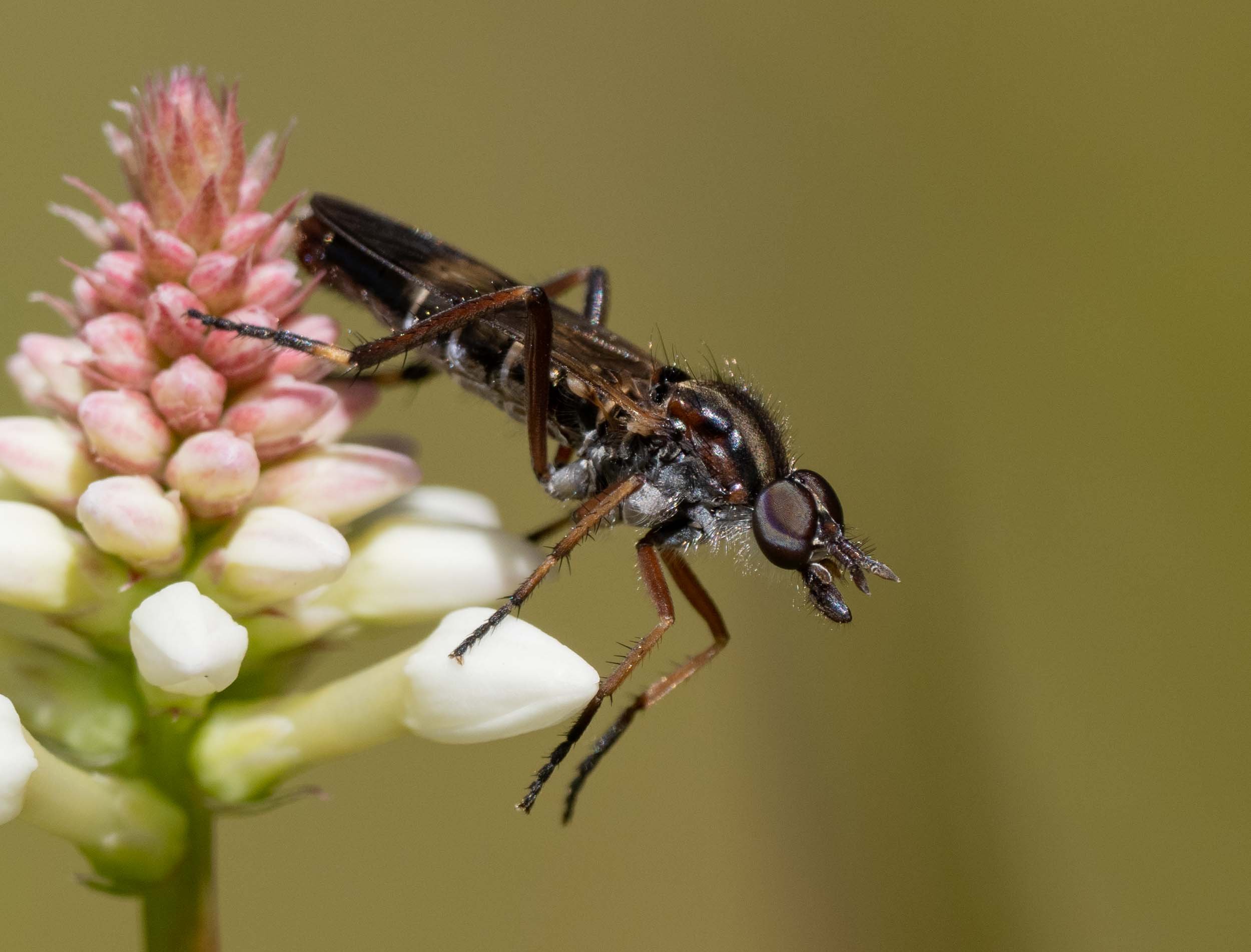
stiletto fly
Ectinorhynchus (family: Therevidae)
Calm, warm days in spring are when we see dancing swarms of these flies – their long back legs dangling and their bodies flashing silver. Therevid larvae are predators of insects, but little is known about the biology of most species. If adults feed at all, it may be on nectar, but they are rarely seen at flowers. This one was simply resting and displaying, not feeding.
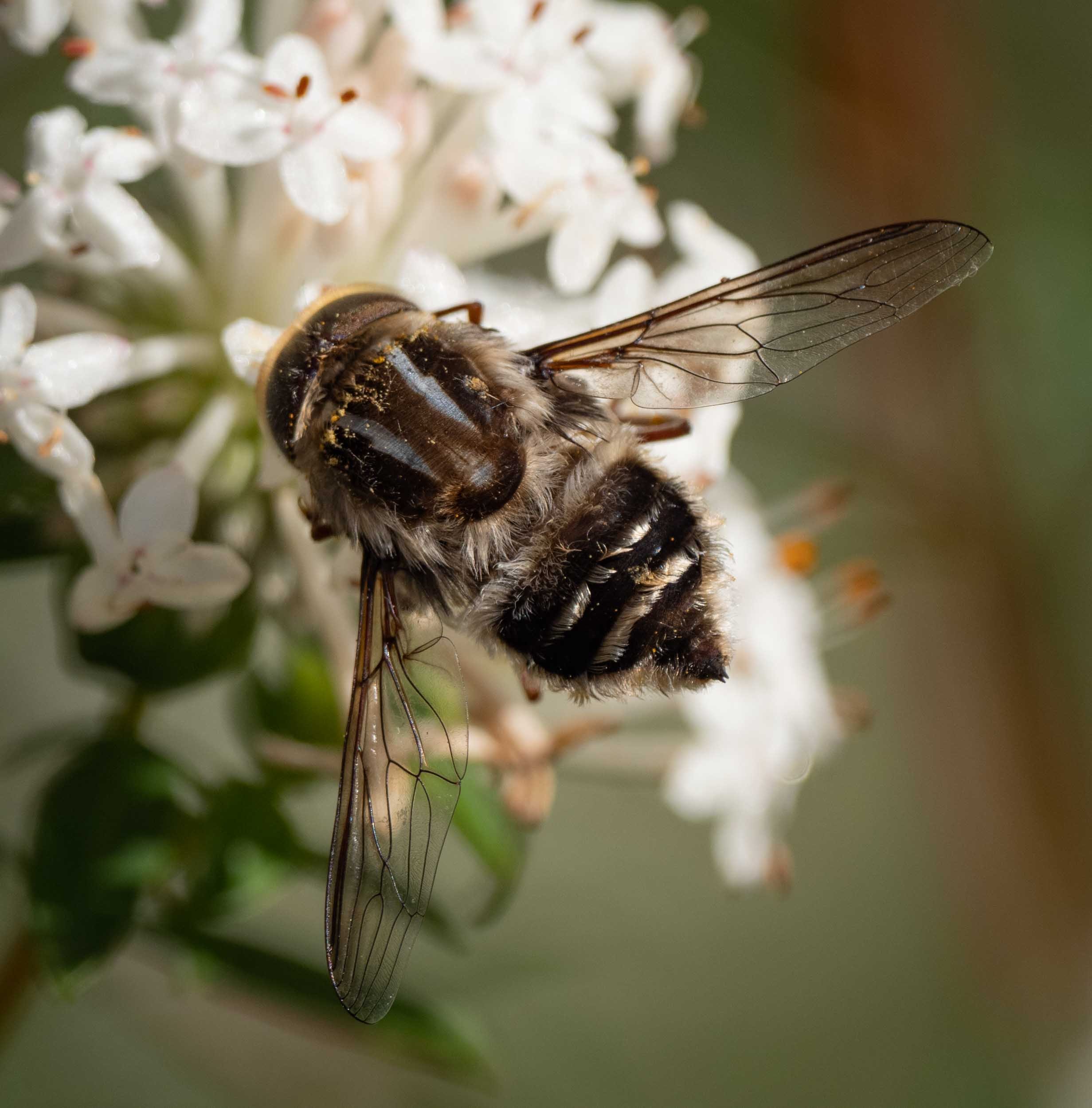
Tangle-veined fly
Trichopthalma (family: Nemestrinidae)
We included this species in the last photo essay … but I just couldn’t resist adding this latest sighting. They’re big, distinctive, and uncommon.

native bee gathering pollen
Lasioglossum (family: Halictidae)
This female has pushed apart the lateral petals of the pea flower (a Bossiaea) to expose the pollen-laden anthers. She spends some time packaging her load into special regions of long hairs - particularly on her legs - before flying off to her nest burrow. Inevitably some pollen will remain stuck to her body when she ventures out to find another flower. And she will probably seek out another Bossiaea flower… good news for the plants.
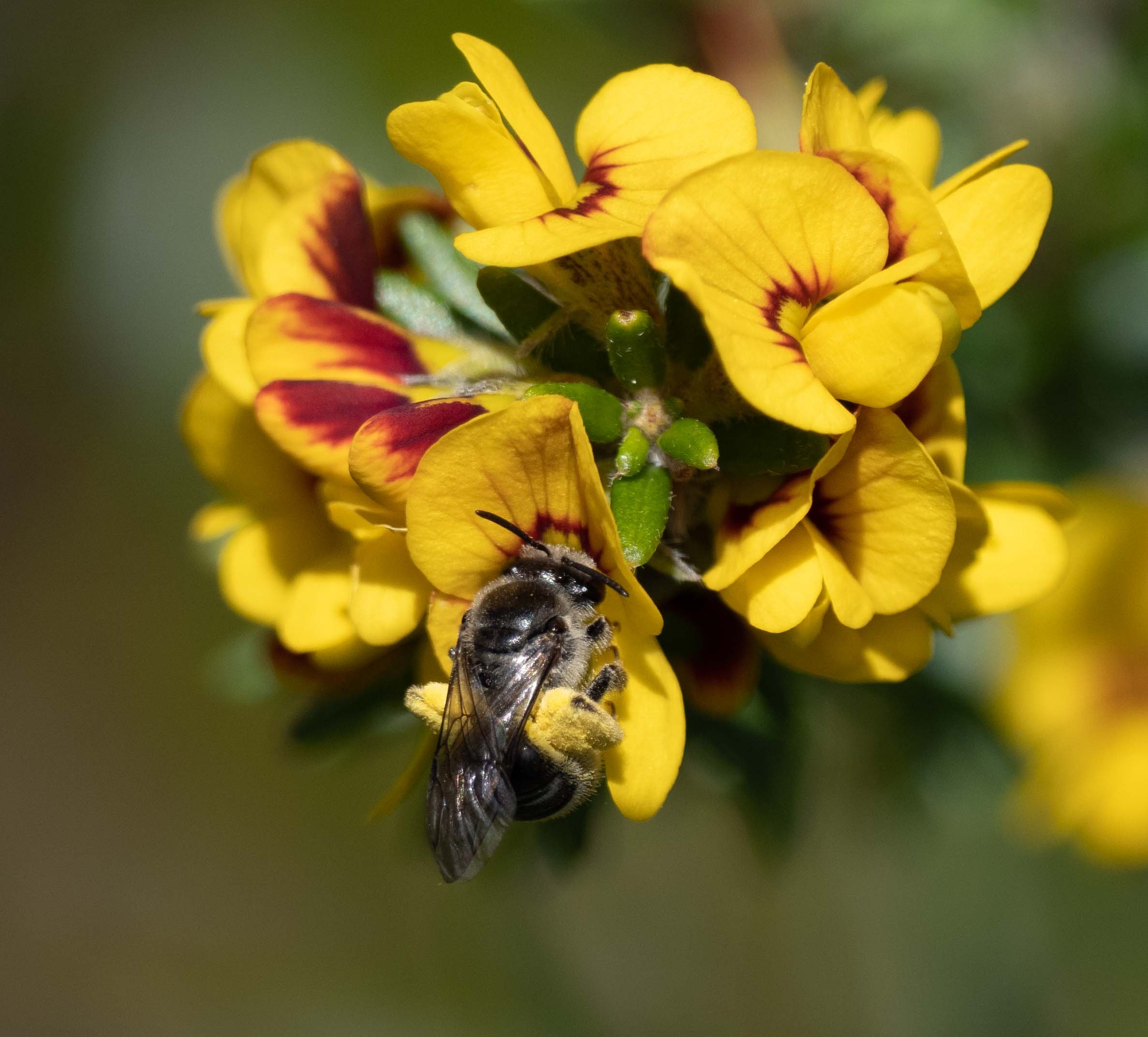
another pea, another bee
Lasioglossum (family: Halictidae) on Aotus ericoides (family: Fabaceae)
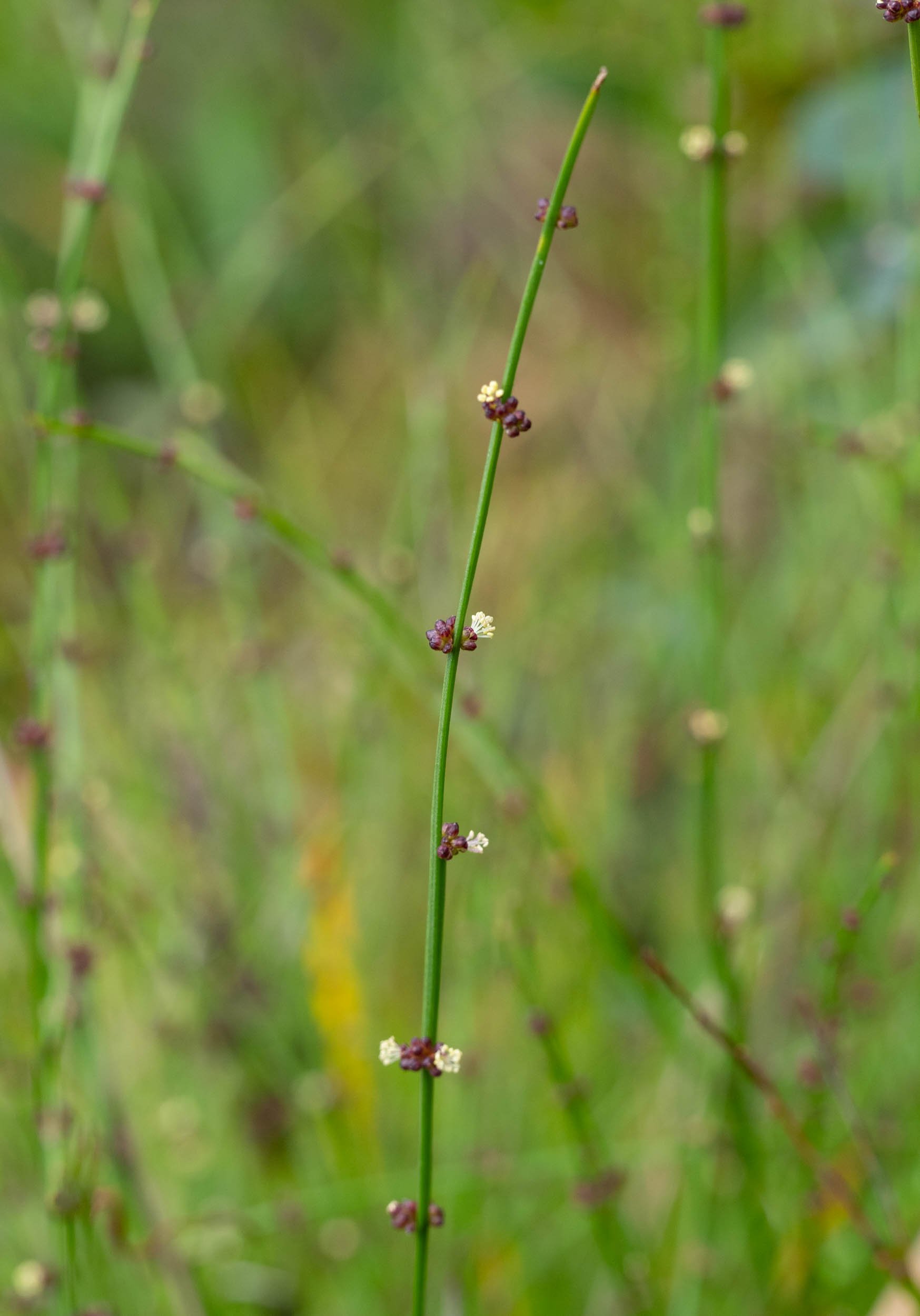
Broom Spurge
Amperea xiphoclada var. xiphoclada (family: Euphorbiaceae)
At first glance, nothing much seems to be happening here - no apparent leaves and are those things on the green stalk flowers? It’s an unusual plant which has its own beauty if you look closely.

Broom Spurge - male flowers
Amperea xiphoclada var. xiphoclada (family: Euphorbiaceae)
The flowers of this plant are tiny - around 1.5mm wide - and grow directly attached to the stem in clusters of 3-4. This photo shows male flowers with their protruding yellow stamens. In our region, female flowers grow on separate plants - they are said to be dioecious. There are no petals - just reddish-purple sepals. This species is widespread in our forest. It began flowering in early spring.
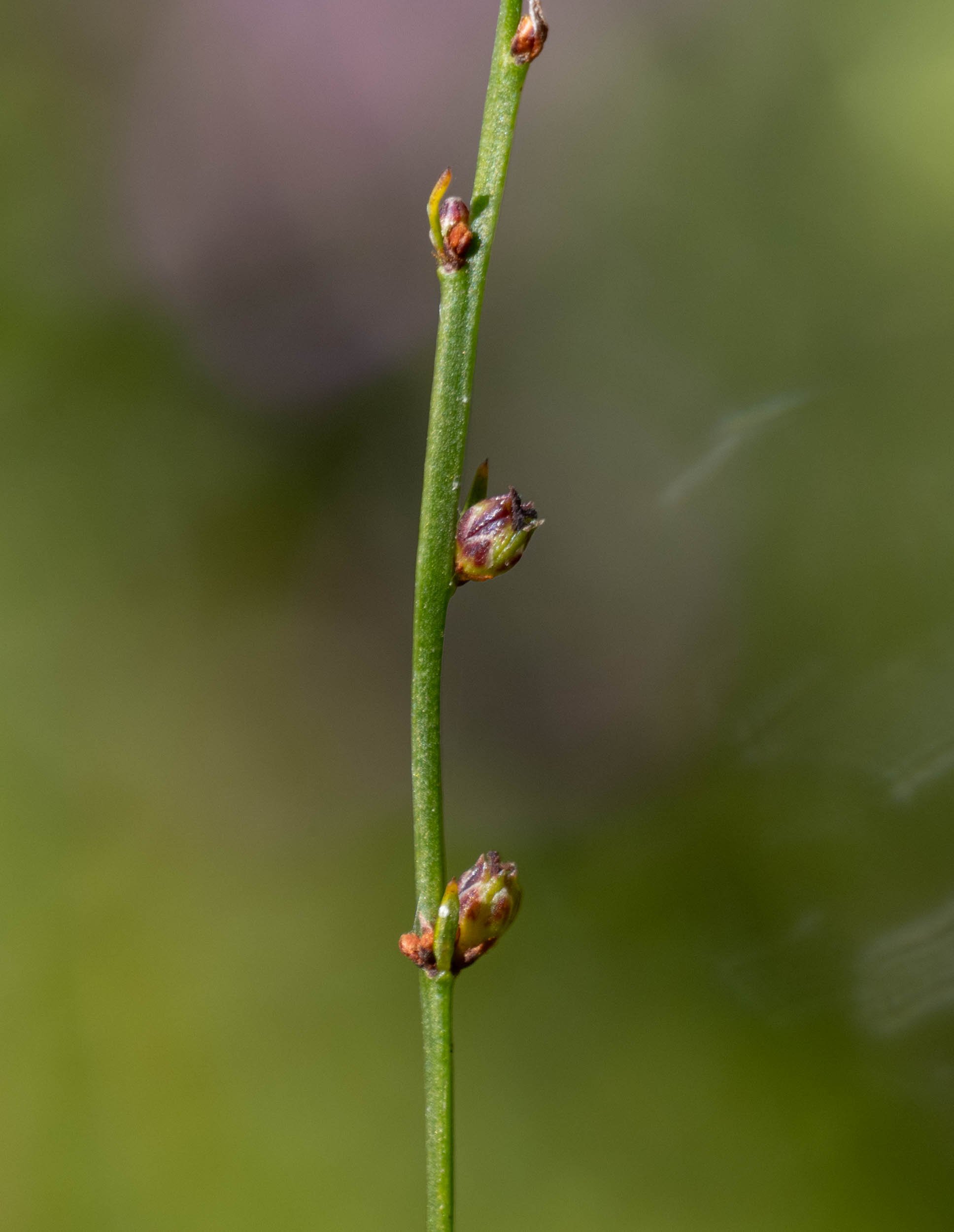
Broom Spurge - female flowers
Amperea xiphoclada var. xiphoclada (family: Euphorbiaceae)
This is a plant with female flowers. At the base of the flower clusters you can see the small leaves which are present in some, but not all plants.
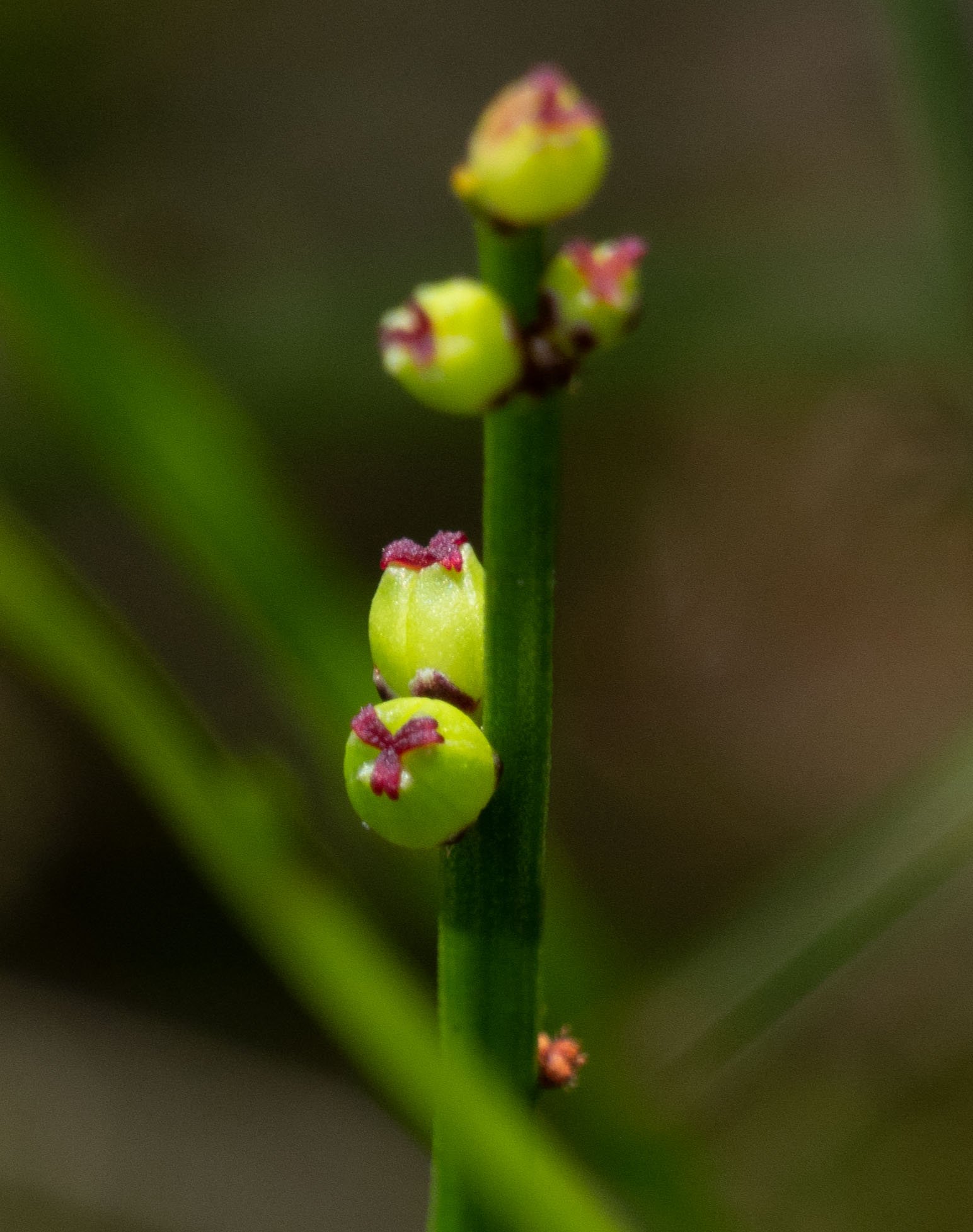
Broom Spurge
Amperea xiphoclada var. xiphoclada (family: Euphorbiaceae)
A closer view of a cluster of younger female flowers, each with 3 styles.
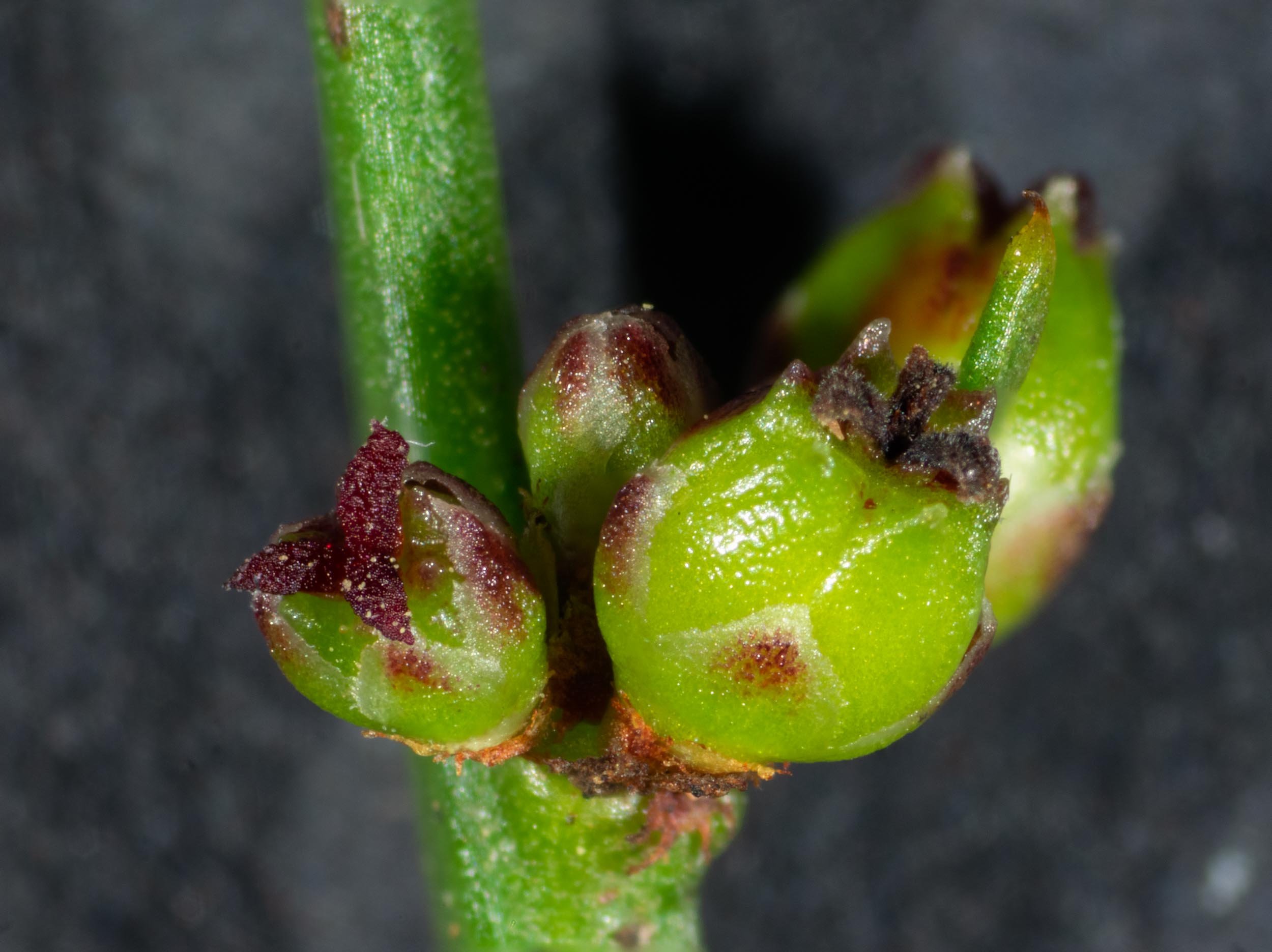
Broom Spurge
Amperea xiphoclada var. xiphoclada (family: Euphorbiaceae)
A high magnification view of a cluster of older female flowers. The one on the left shows 3 short red styles with a few tiny pollen grains on the surface. The one on the right is already developing into a fruit. A leaf blade lies behind it.
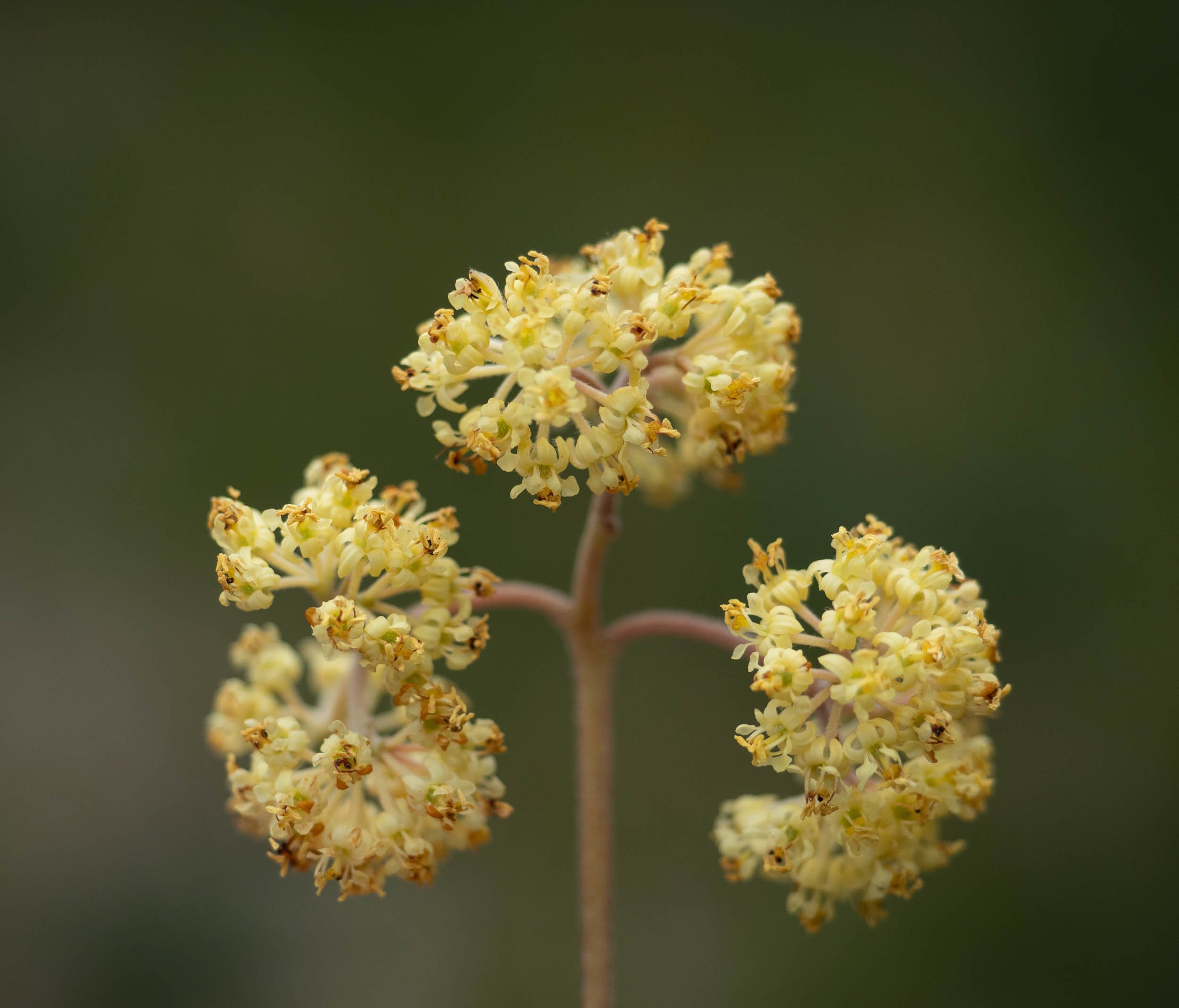
Pomaderris
Pomaderris intermedia (family: Rhamnaceae)
Pomaderris is a common shrub in our region with many different species, but to date we’ve sighted just one plant in our forest. It is growing directly adjacent to the river - it likely grew from seed carried downstream during a flood. Buds were present on this bush when we first discovered it in early May. But we had to wait until late September to see the opened flowers - shown in this photo.
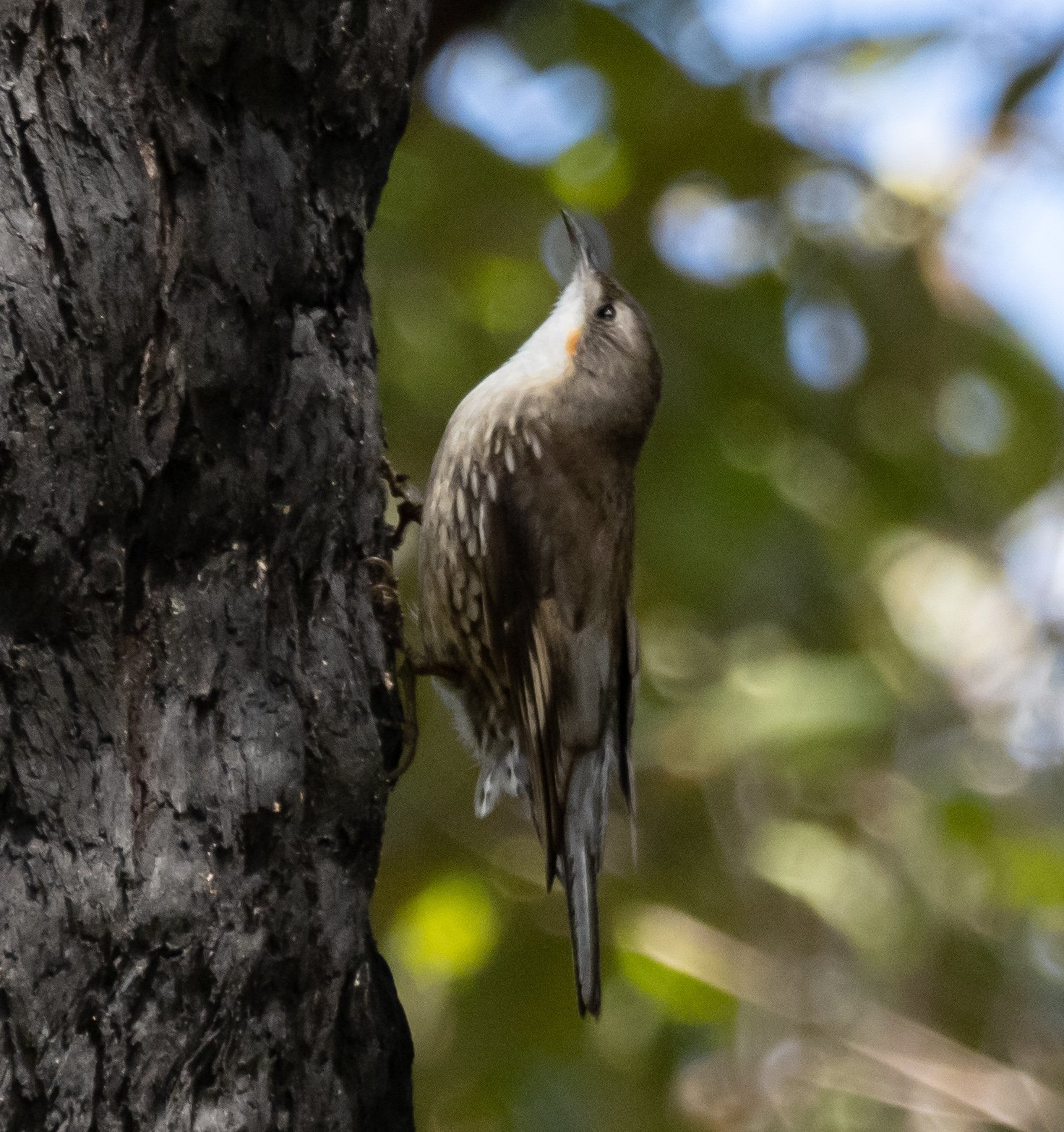
White-throated Treecreeper - female
This photo shows the massive claws which enable this bird to dance up tree trunks as it searches for ants and other insects. At this time of the year, it’s likely to be gathering food for a hungry clutch of chicks.

longhorn beetle
Pentacosmia sp. (family: Cerambycidae; subfamily: Lamiinae)
One of the first beetles to make a daytime appearance this spring, and it’s a new one for our home list!
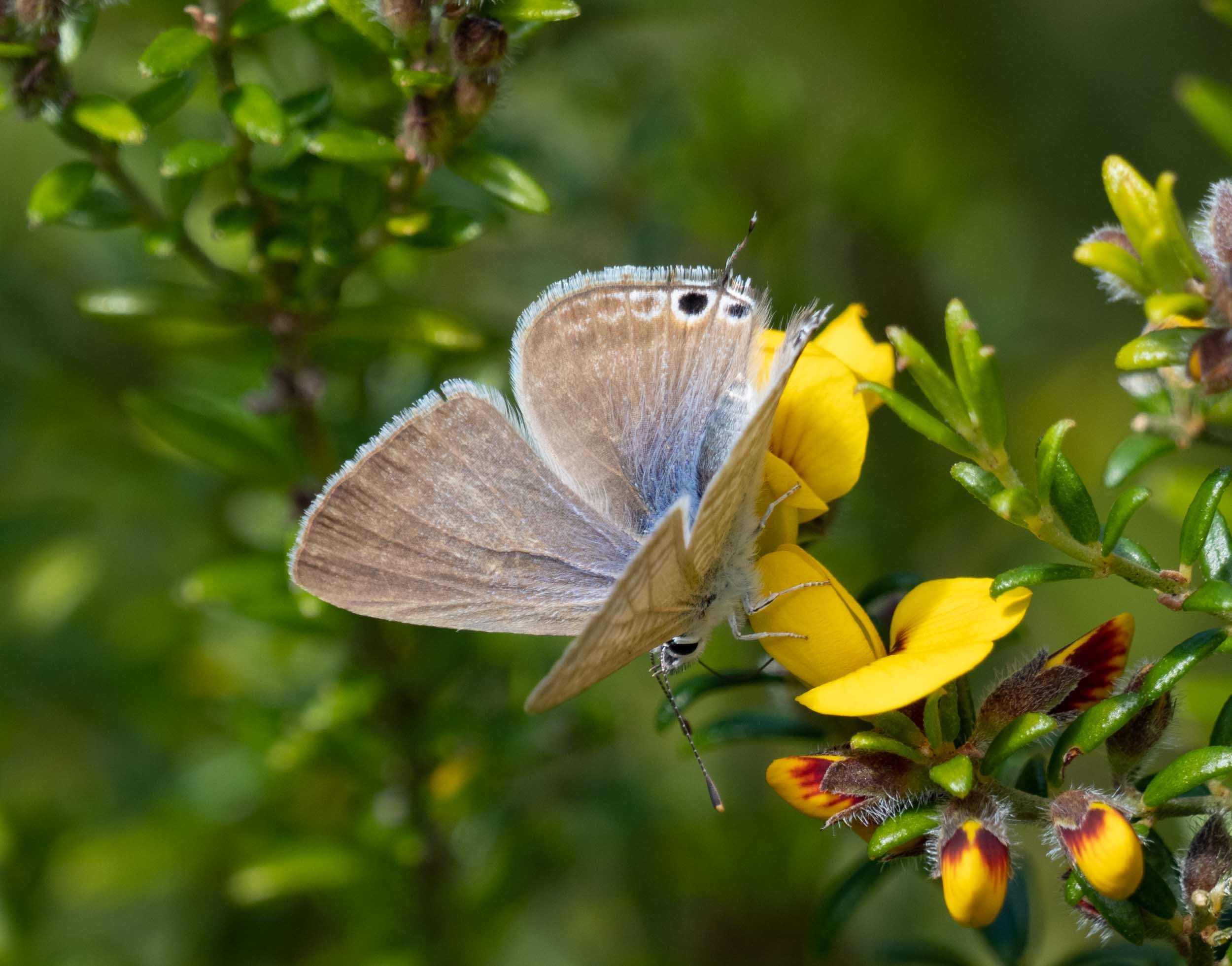

longhorn beetle
Pentacosmia sp. (family: Cerambycidae; subfamily: Lamiinae)
This genus is endemic to Australia, most commonly in the south east. The grubs probably feed in the woody branches of various plants … including Acacia longifolia, which we certainly have plenty of!

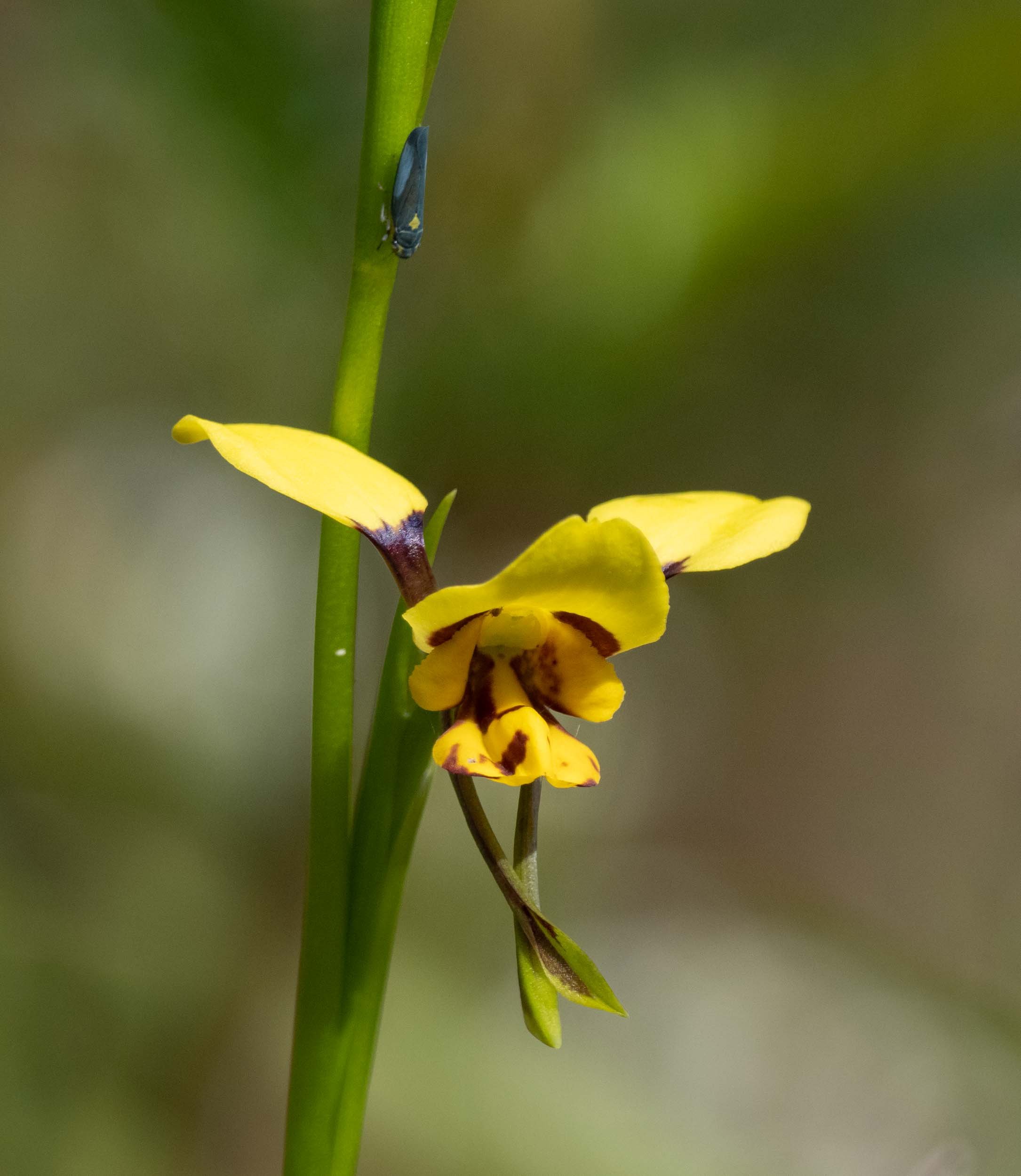
a small leafhopper
Ishidaella sp. (family: Cicadellidae)
I was photographing this Tiger Orchid (Diuris sulphurea), when I noticed a little leafhopper clinging to the stem.

leafhopper
Ishidaella sp. (family: Cicadellidae)
These pretty blue, sap-sucking insects are a fairly common sight in summer. But a closer look at this one and I realise it is a bit different to those we’ve photographed before. Species identification is a work in progress.

Long-tailed Pea-blue butterfly ... another first
Lampides boeticus (family: Lycaenidae)
It’s always exciting to add another butterfly to our home list. And this one is new to our life list … that is, we’ve never photographed it before, anywhere!
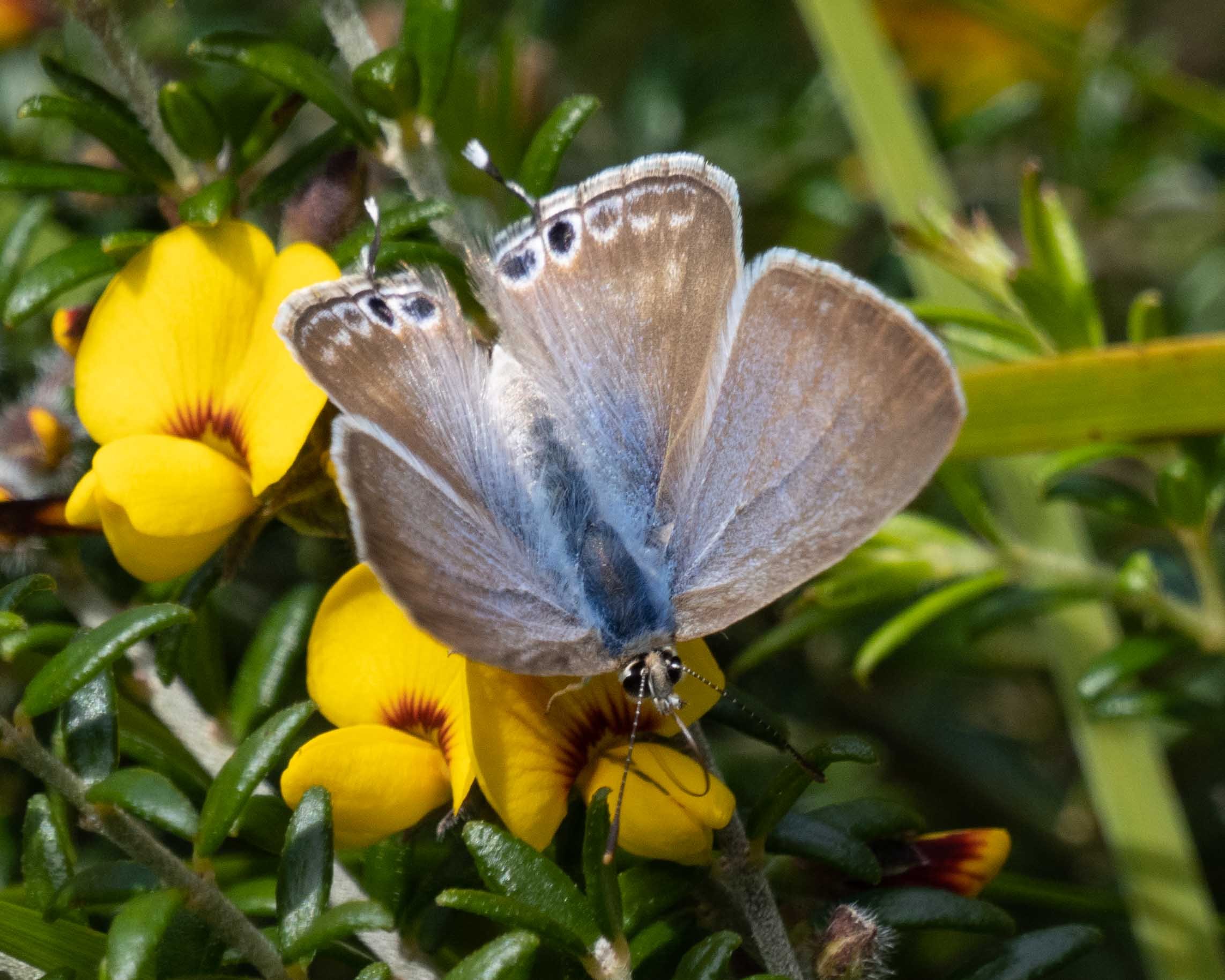
Long-tailed Pea-blue butterfly
Lampides boeticus (family: Lycaenidae)
The adults are migratory, so I guess we have just had a troop blow in. We spotted several, feeding on Aotus. They lay their eggs in the flower buds of various peas … including Kennedia, Pultenaea, Indigofera, Gompholobium. Plenty for her to choose from here right now!

Common Grass Blue butterfly
Zizina otis (family: Lycaenidae)
This small blue is common Australia wide, particularly in open grassy areas. But despite the name, it is actually attracted to pea flowers growing in sunny places. The caterpillars feed on leaves, flowers and seedpods of a wide range of plants including Hardenbergia, Indigofera, and Pultenaea - each of which we currently have in abundance.
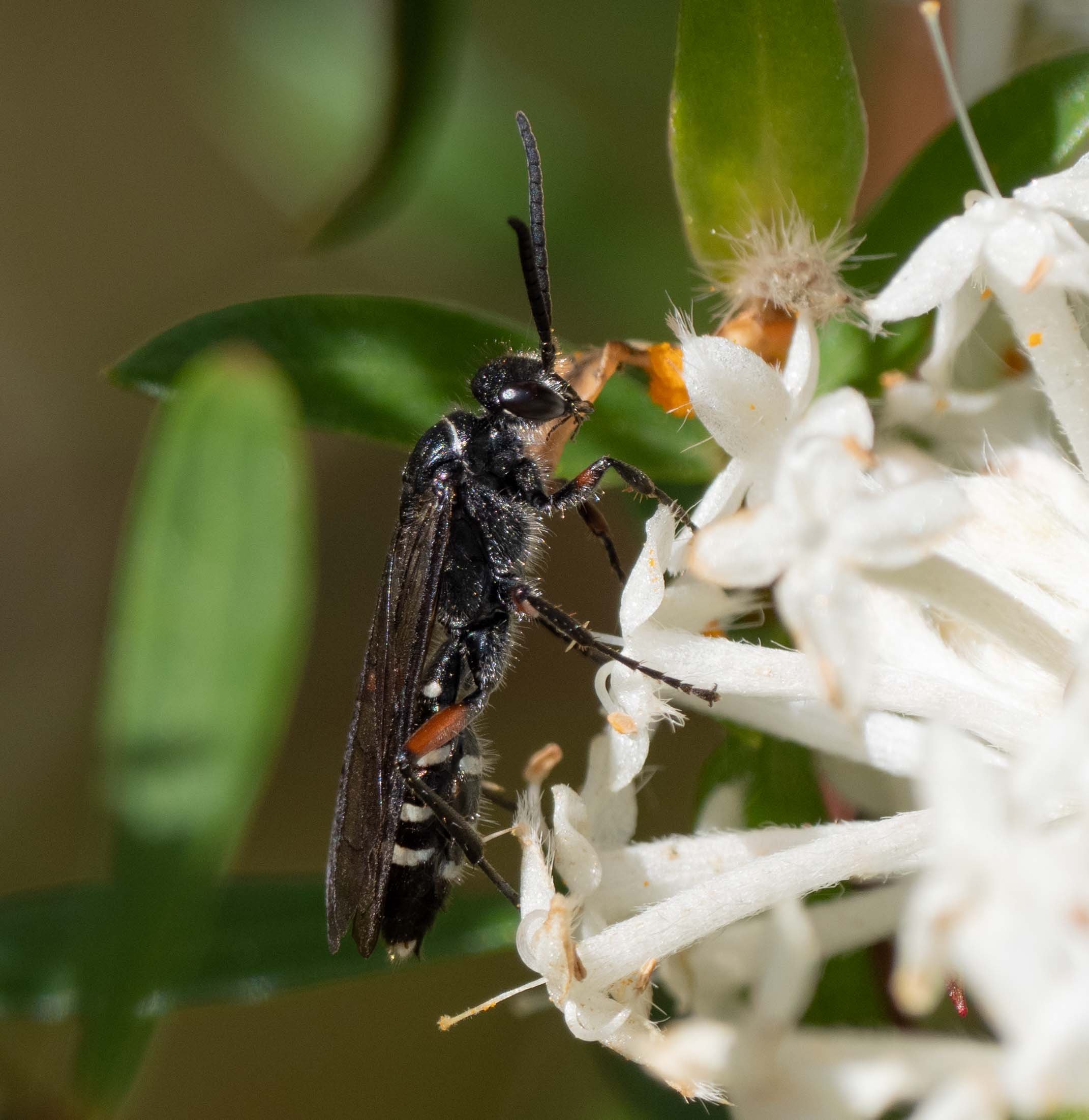
a mystery wasp
There’s always another wasp! I’ve never seen this one before, nor do I have a clear idea what type it might be. I’m thinking ‘flower wasp’ (Thynninae), but without a look at the wing venation I’m not confident. Yet another insect I’ll be on the lookout for in the weeks to come.
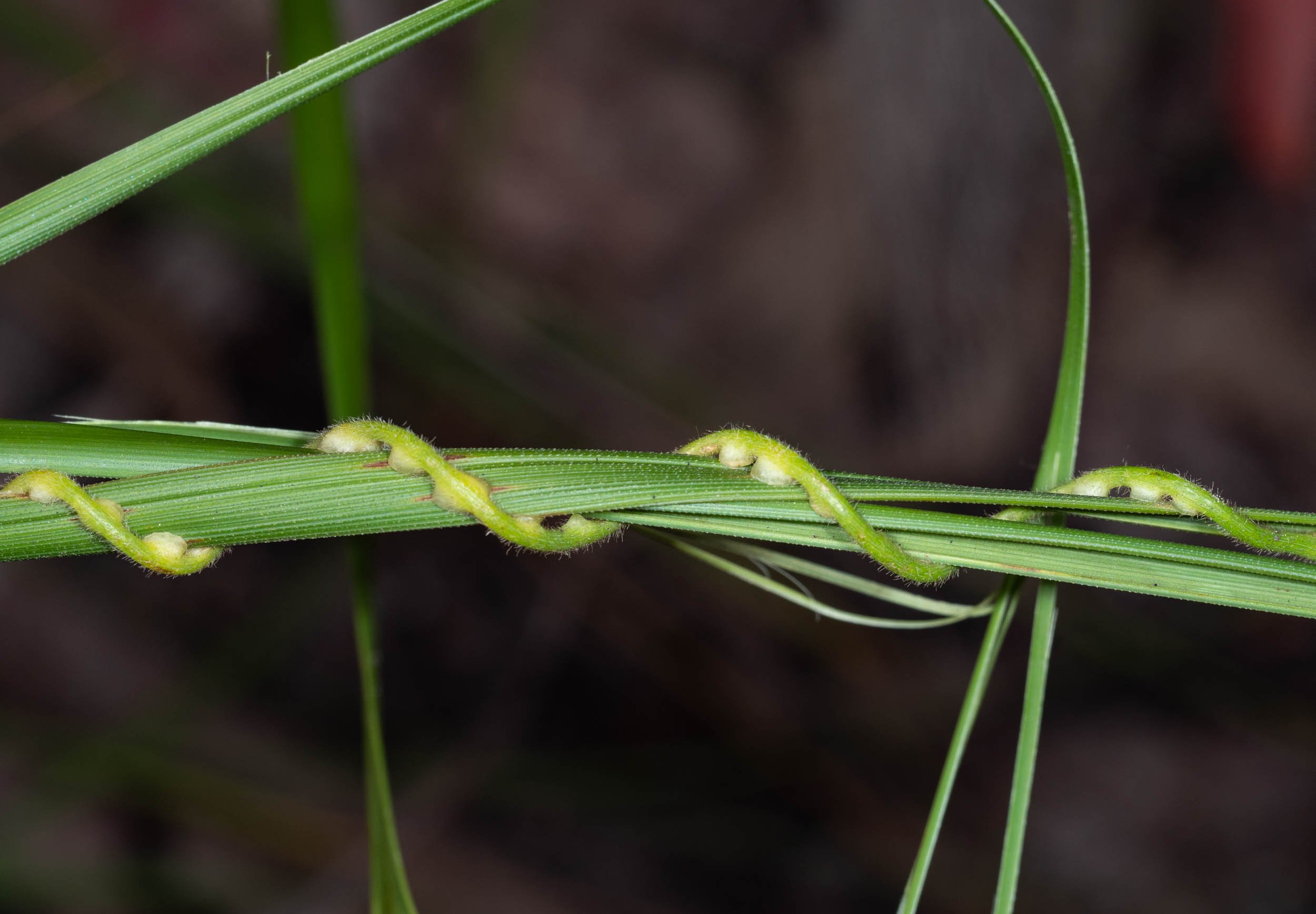
Devil's Twine
Cassytha pubescens (family: Lauraceae)
A late entrant! This is one of the very few home plant species that we had not seen after the January 2020 fire. We discovered it again in just the last couple of days, but it’s likely to have been growing for some time. Cassytha is hemiparasitic. Its photosynthetic stem twines around other plants and taps into the xylem of the host to extract water and nutrients. The sucker-shaped organs - haustoria - it uses for this purpose can be clearly seen here.

























































